What Is An Email Marketing Campaign?
An
email marketing campaign is a sequence of emails sent to subscribers over a certain period. Each email marketing campaign has a specific goal. This means individual email messages within a campaign build momentum toward the goal. They prompt the recipient to take the targeted action bit by bit
.
The essential components of an email campaign are as follows:
- A goal
- Target audience
- Number of emails
- Time limitation
- Email copy & content strategy
Marketers often arrange all this data in
email marketing templates, which help them create an email marketing campaign plan and keep it organized.
Why Do You Need An Email Marketing Campaign?
There's a difference between
email marketing and email marketing campaigns.

Benefits Of Email Marketing
- You can market your product/services for free to a customer who actively chooses to receive updates from you.
- Emails land in your potential customer's inbox, unlike social media posts. These emails stay long and close enough to influence their purchasing decisions, making it one of the most effective forms of marketing.
- There is a wide range of email marketing ideas out there, allowing you to be flexible and creative in your marketing efforts.
- With a wide range of email lookup tools out there, it’s relatively easier to find your customers’ email addresses (especially in the B2B area). Email is a more accessible marketing channel than cold calling, for example.
Benefits Of Email Marketing Campaigns
- Email marketing campaigns involve triggers that align emails with subscribers' actions and wants. They personalize marketing, help customers feel connected with you, and consequently build stronger customer relationships.
- Email marketing campaigns are measurable (via tracking your emails), flexible, and scalable. They are safe investments with a high ROI.
Benefits Of Studying Email Marketing Examples
- It inspires new ideas and approaches toward clear and effective messaging.
- It helps you identify things that may annoy or frustrate your subscribers.
Here’s an infographic with some stats showing how powerful email marketing can be:
 Source
Source
Types Of Email Marketing Campaigns
There are different types of email marketing campaigns, each with its own goal. Here are a few common types:
Onboarding Email Campaigns
Target: Establish a relationship
Generally recognized as a welcome email series,
customer onboarding email campaigns aim to familiarize the new subscriber with your brand, product/services, and community.
Any business (big or small, physical or virtual) can use these emails to tell readers how they can benefit from you and propose a relationship between you. These relationships include:
- Paying customer
- Freebie collector
- Newsletter subscriber
- Community member
Usually, this series comprises 4-6 emails sent over one month.
Brand Awareness Email Campaigns
Target: Build credibility and get more followers
The gist of brand awareness email campaigns is to inform the receivers about what you have to offer. You can focus on your products, services, team, company culture, employment opportunities, ongoing discounts, freebies, and upcoming upgrades.
Brand awareness campaigns can be in the form of regular email newsletters or short campaigns. Your aim here is to filter and find the people interested in knowing more about you. If a reader:
- Opens your emails frequently
- Hasn’t unsubscribed
- Followed your socials
- Forwarded your email
They are your new leads. You can deploy your promotional campaigns to these email receivers.
Note that you cannot share all your products or services in a welcome series. You can only share your best ones. Brand awareness campaigns allow you to go a step further.
Traffic Generation Email Campaigns
Target: More engagement and views
Traffic generation emails are mostly automated because they contribute only a tiny bit
to the sales funnel. These campaigns can be about:
- Your blog
- Your social media channels
How do you develop a campaign for this? You can use an email marketing tool to segment your list. Every time you upload a new blog, visitors who have subscribed to your blog can receive an intriguing snippet or a summary.
Promotional Email Campaigns
Target: Prompt a purchase (pure sales)
Most established brands send out only a single promotional email every time they offer a seasonal discount or release a new product/service.
However, striving and developing brands believe in running promotional or lead nurturing campaigns. These campaigns are tailored specifically around the recipient as per collected data.
Sales Development Representative (SDR) emails are a type of promotional email. These can have separate campaigns too.
Sponsorship Email Campaigns
Target: Prompt a purchase outside your email database
Sponsorship email campaigns are the same as promotional email campaigns. The difference is that you send these emails to customers who don't know about your business yet. These cold outreach campaigns are more like ads and cost money.
Re-Engagement Email Campaigns
Target: Revive and retain customers
If a customer has abandoned their cart or been inactive for a while, you can list them for your re-engagement email campaign. It's a good idea to begin this series with a feedback query or discount offer exclusively for them.
Upselling Email Marketing Campaigns
Target: Convince customers to upgrade
These campaigns encourage your clients to try more or higher-priced products/services. The frequency of these emails should be lower than all others mentioned above to keep your customer from getting annoyed.
Top 25 Email Marketing Examples To Learn From
Below, we've listed some of the best email marketing examples of 2022. Here's a table that'll help you understand each example better:
| Success Rate |
| Experts Approved | ⭐⭐⭐ |
| High-performing | ⭐ |
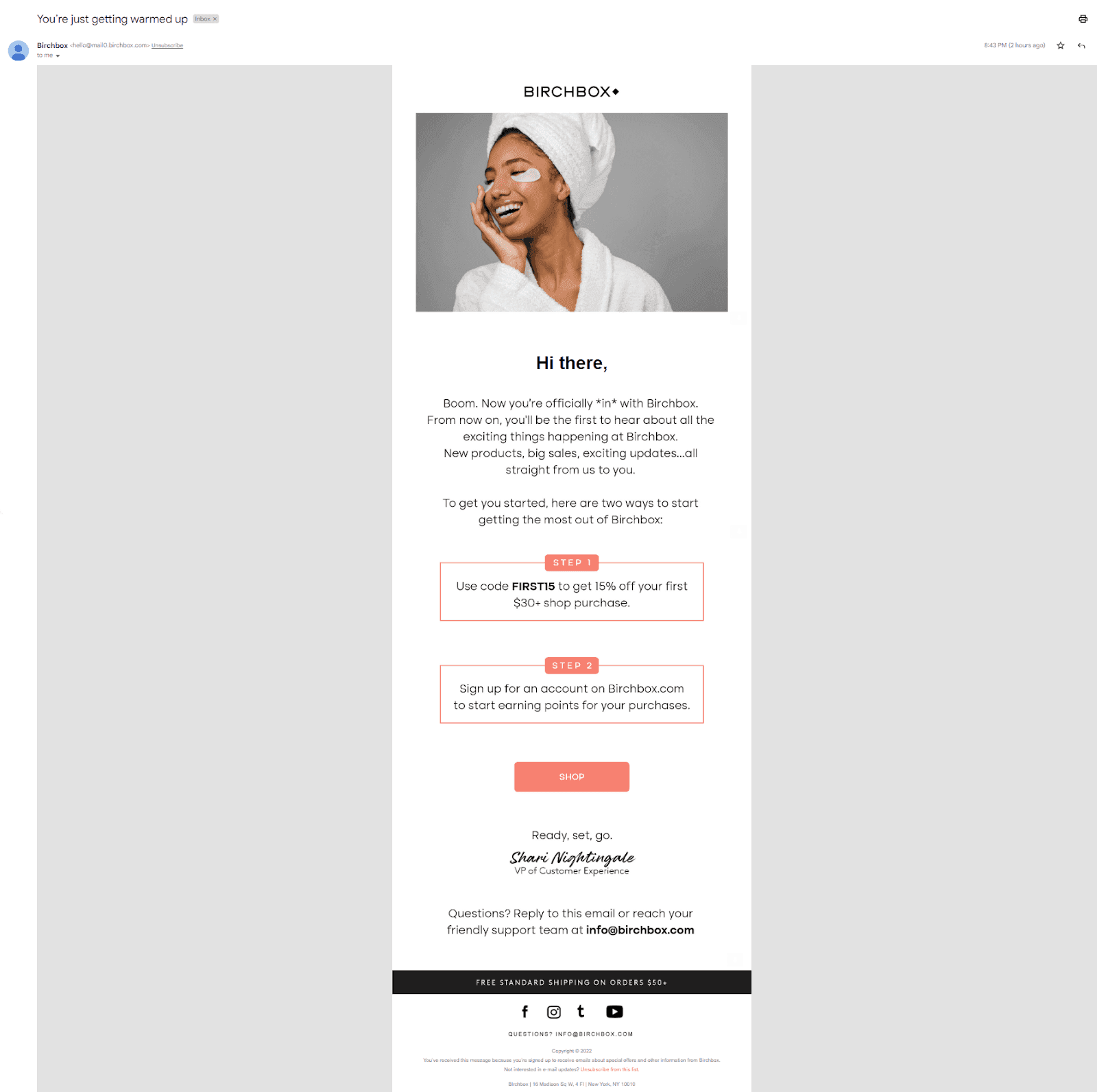
Type of Email: Onboarding
Success Rate: ⭐⭐⭐
This is Birchbox’s “You’re just getting warmed up” welcome email. From the subject line to the discounts offered — there’s nothing in this email that won’t appeal to the brand’s target audience, i.e., self-care and beauty-obsessed individuals.
It prompts the user to dive further into the Birchbox community and gives them a reason to do so (points). Moreover, owing to the value provided in the first email, there’s a high chance users will pay attention to the next email.
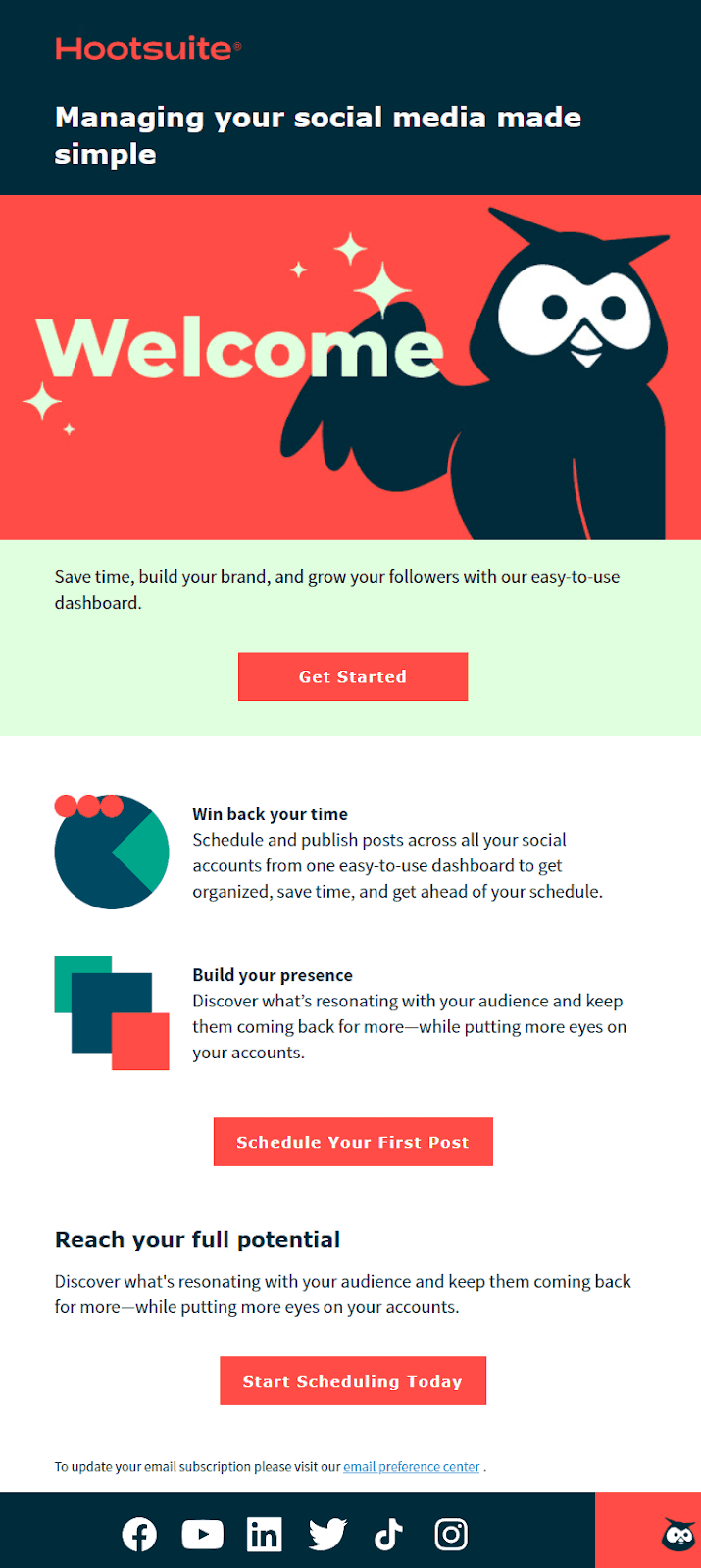 Type of Email:
Type of Email: Onboarding
Success Rate: ⭐⭐⭐
This small yet appealing email introduces the key functionality of Hootsuite. It prompts the user to take immediate action with a specific CTA, i.e., schedule your first post. Using an avatar at the beginning of the email embeds a recognition factor in the user’s mind, which means this email also works as a brand awareness message.
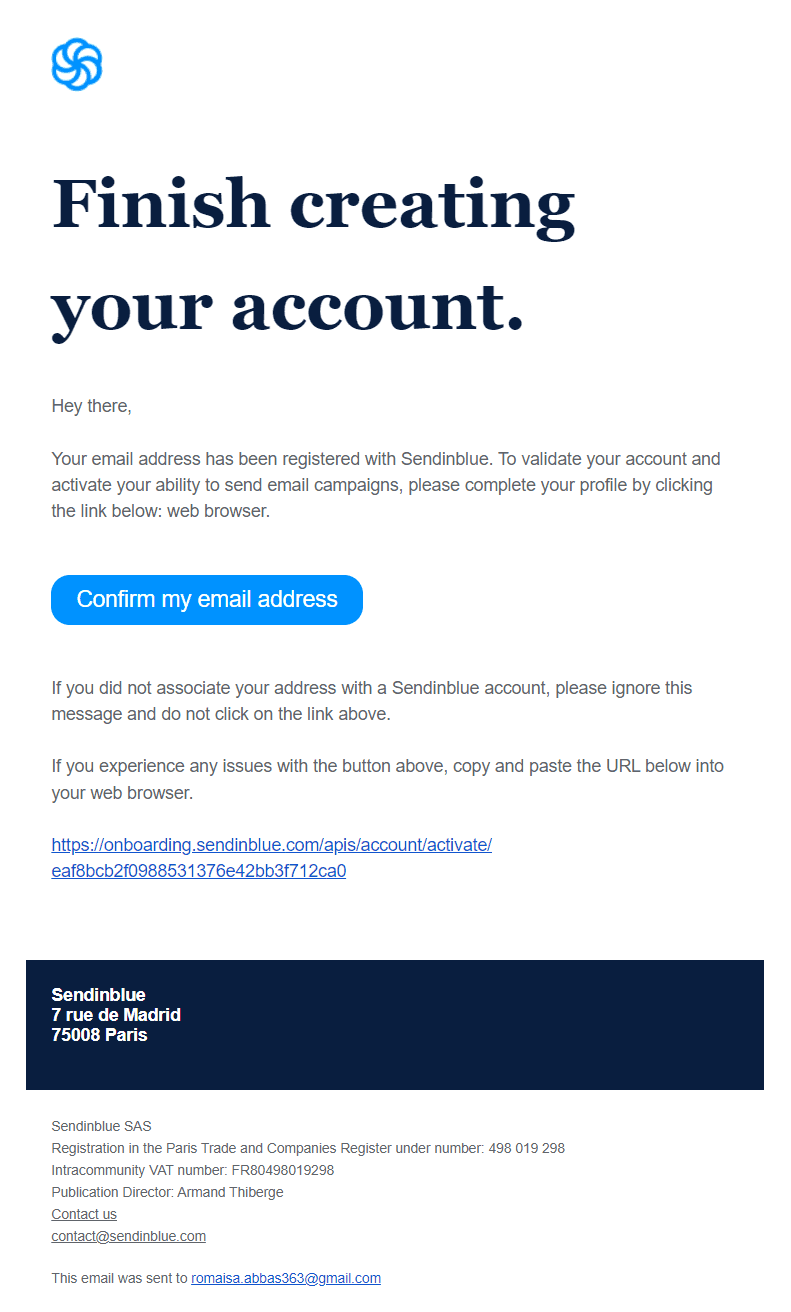 Type of Email:
Type of Email: Onboarding
Success Rate: ⭐
This email wins because it is very direct. The copy is precise and clear. And there’s a clickable button that eases the process for the user.
The email doesn’t waste the user's time and wins trust with solid instructions. As users set up their accounts, they also learn they’ll receive instructions about what to do, meaning they already trust Sendinblue’s customer support. They will value future emails.
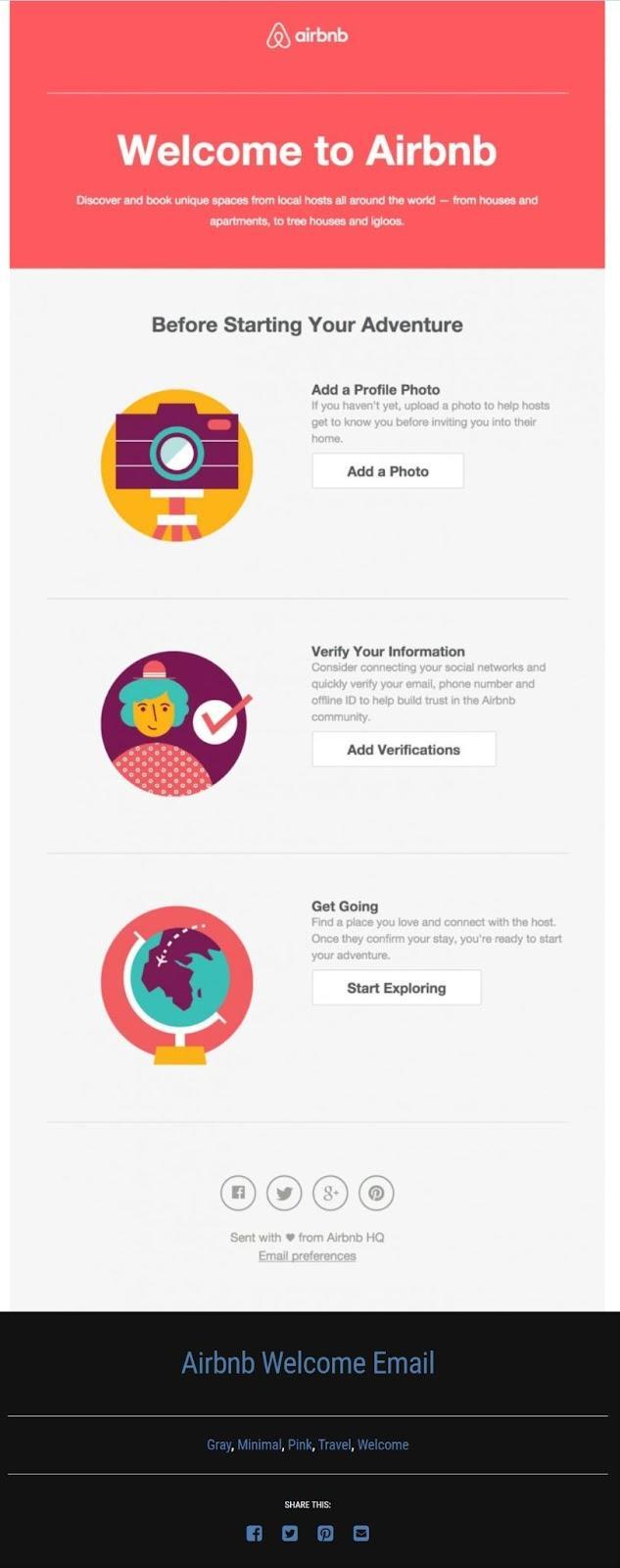 Type of Email:
Type of Email: Onboarding (welcome email)
Success Rate: ⭐⭐⭐
After receiving this email, most Airbnb users did precisely what the email asked. And that’s because the step-by-step instructions in this email are very comprehensive. The credit goes to the actionable copy and corresponding graphics. Plus, there’s an option to set email preferences at the bottom, making the email highly customer-oriented.
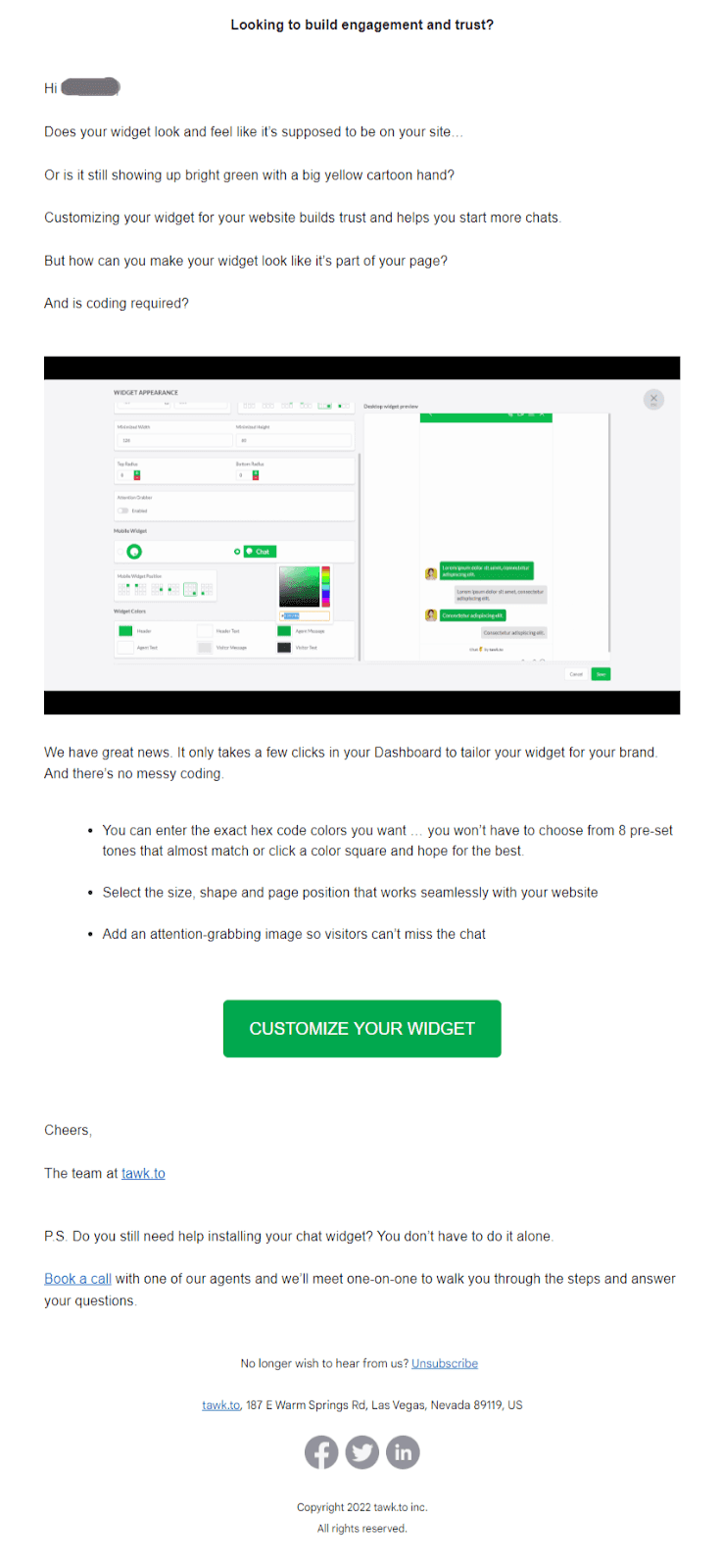 Type of Email:
Type of Email: Onboarding
Success Rate: ⭐
This is the first of Tawk.to’s eight-email-long onboarding campaign. It’s one of the best onboarding campaigns out there because the company demystifies the entire tool to the user step-by-step in a simple, comprehensive series of emails.
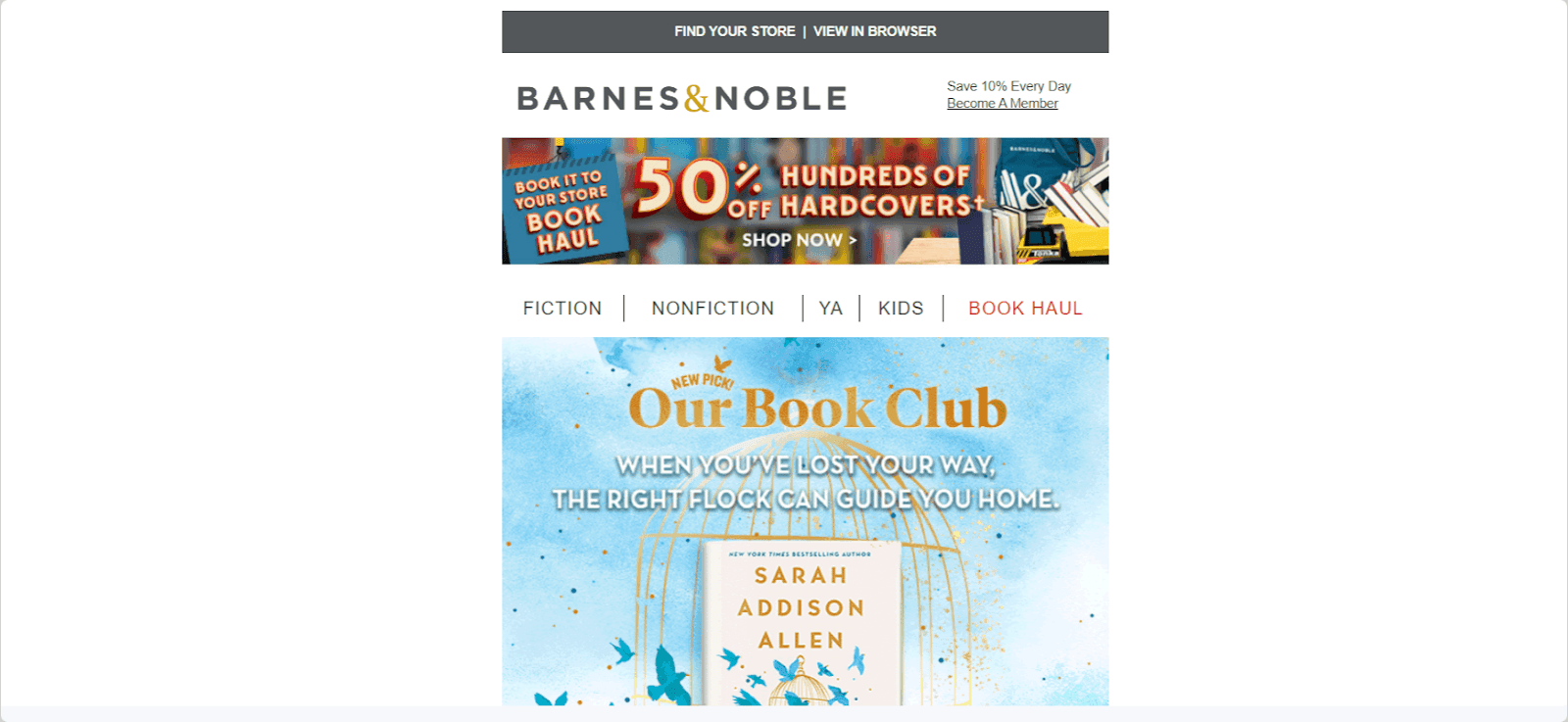
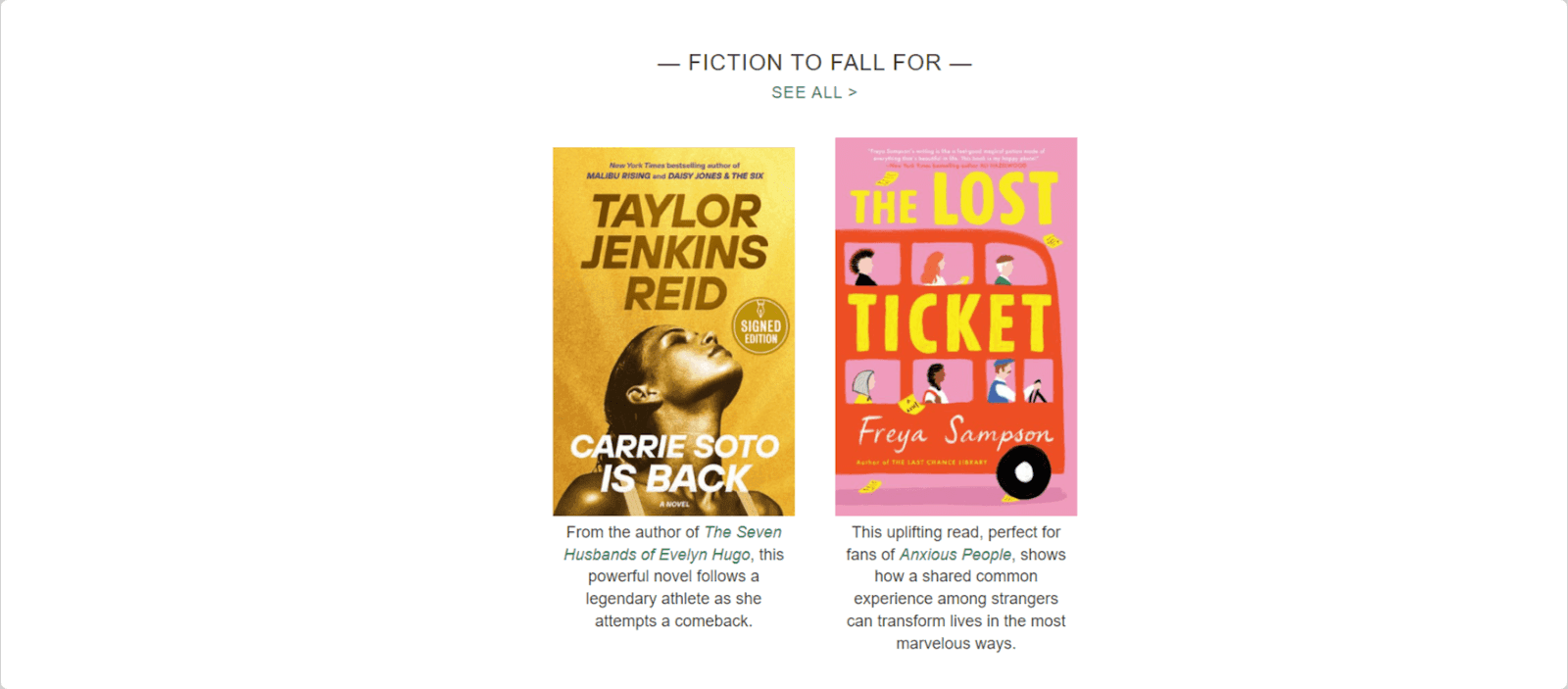
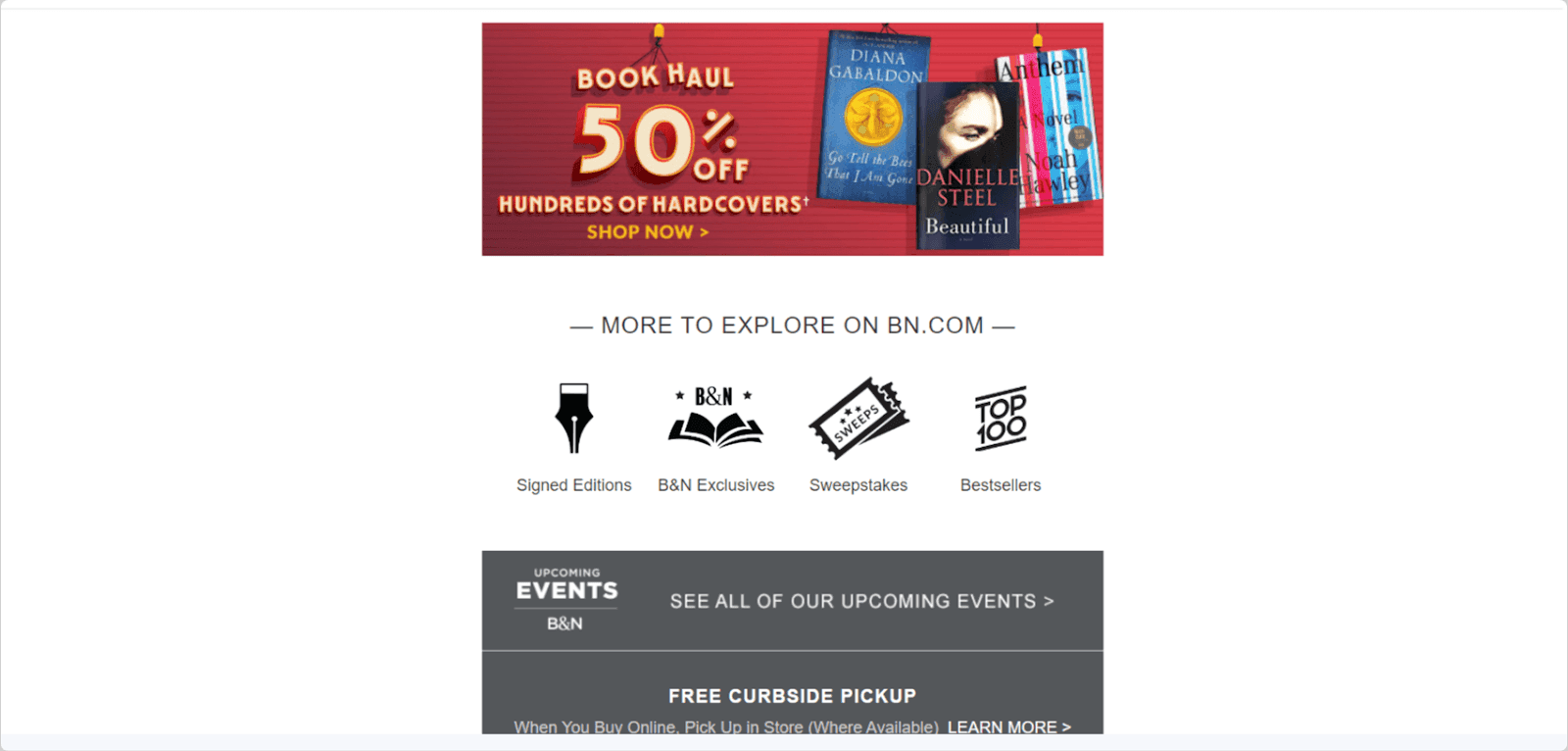 Type of Email:
Type of Email: Brand awareness
Success Rate:⭐⭐⭐
This email begins and ends with an attractive discount. Throughout the message, Barnes & Noble has also personalized the experience by recommending books based on the recipient’s interest.
And as you can already tell,
personalization and customer orientation are key to running successful email campaigns.
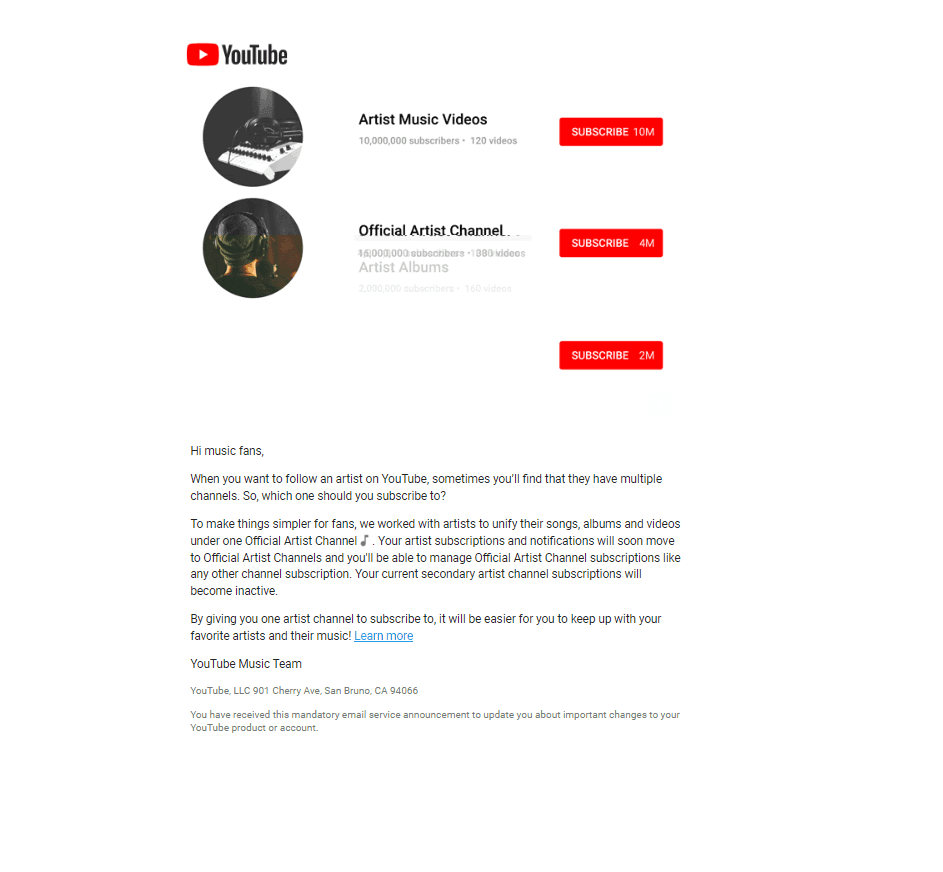 Type of Email:
Type of Email: Brand awareness
Success Rate: ⭐⭐⭐
The email begins with an attention-grabbing animation that provokes the user to hit the subscribe button. It also sparks curiosity about the gist of the email. Naturally, this brings the user to the text below, which is about YouTube's latest feature update. The messaging within the copy is clear, all-embracing, and ends with a clear CTA.
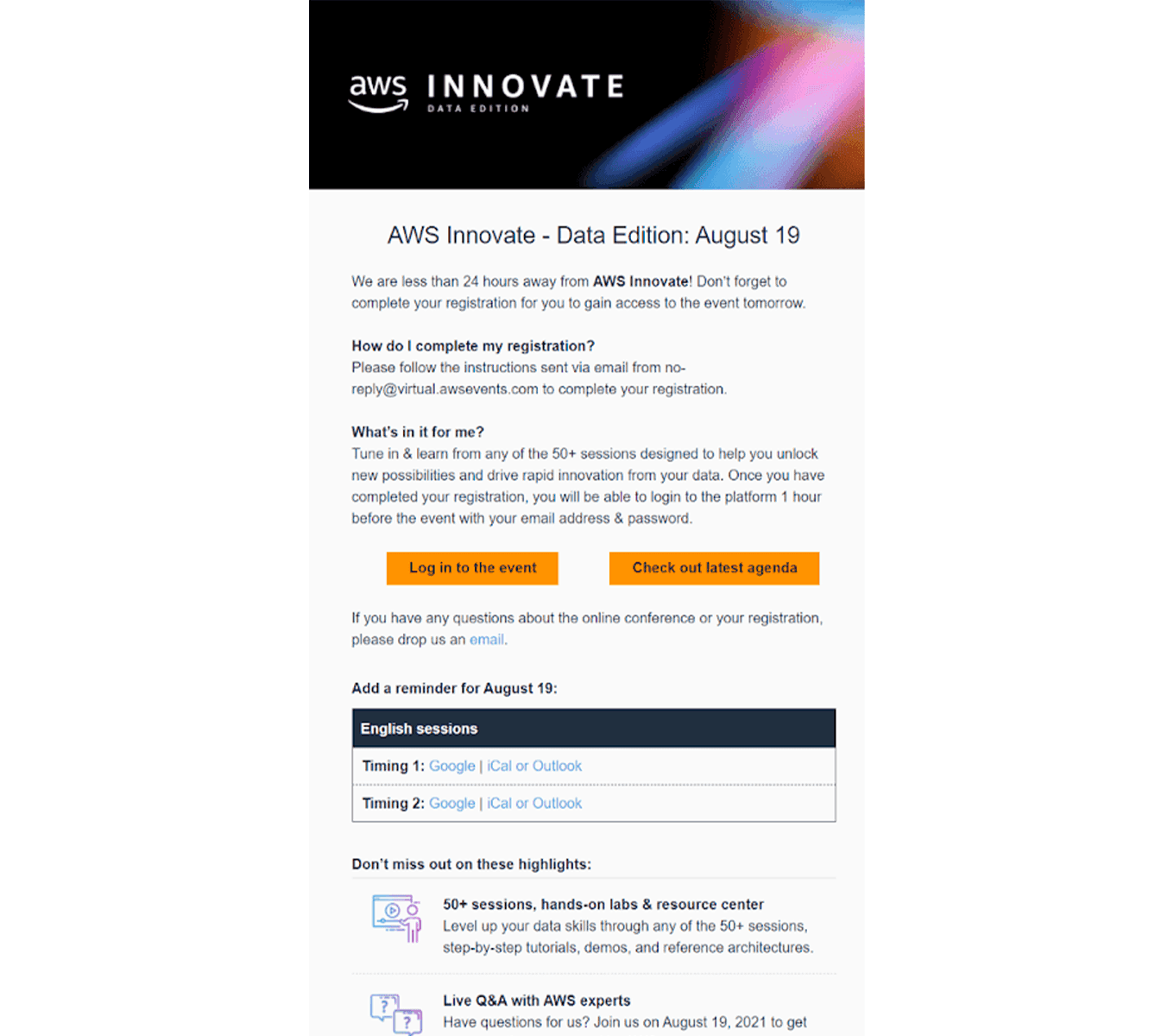 Type of Email:
Type of Email: Brand awareness
Success Rate:⭐⭐⭐
This is the second of six emails Amazon Web Services sent subscribers about an upcoming event.
The content of the first three emails was the same, which continued to reinforce the importance of the event and served as an excellent reminder so people could save the date. The last three emails offered recordings and compensation to those who couldn’t attend the event.
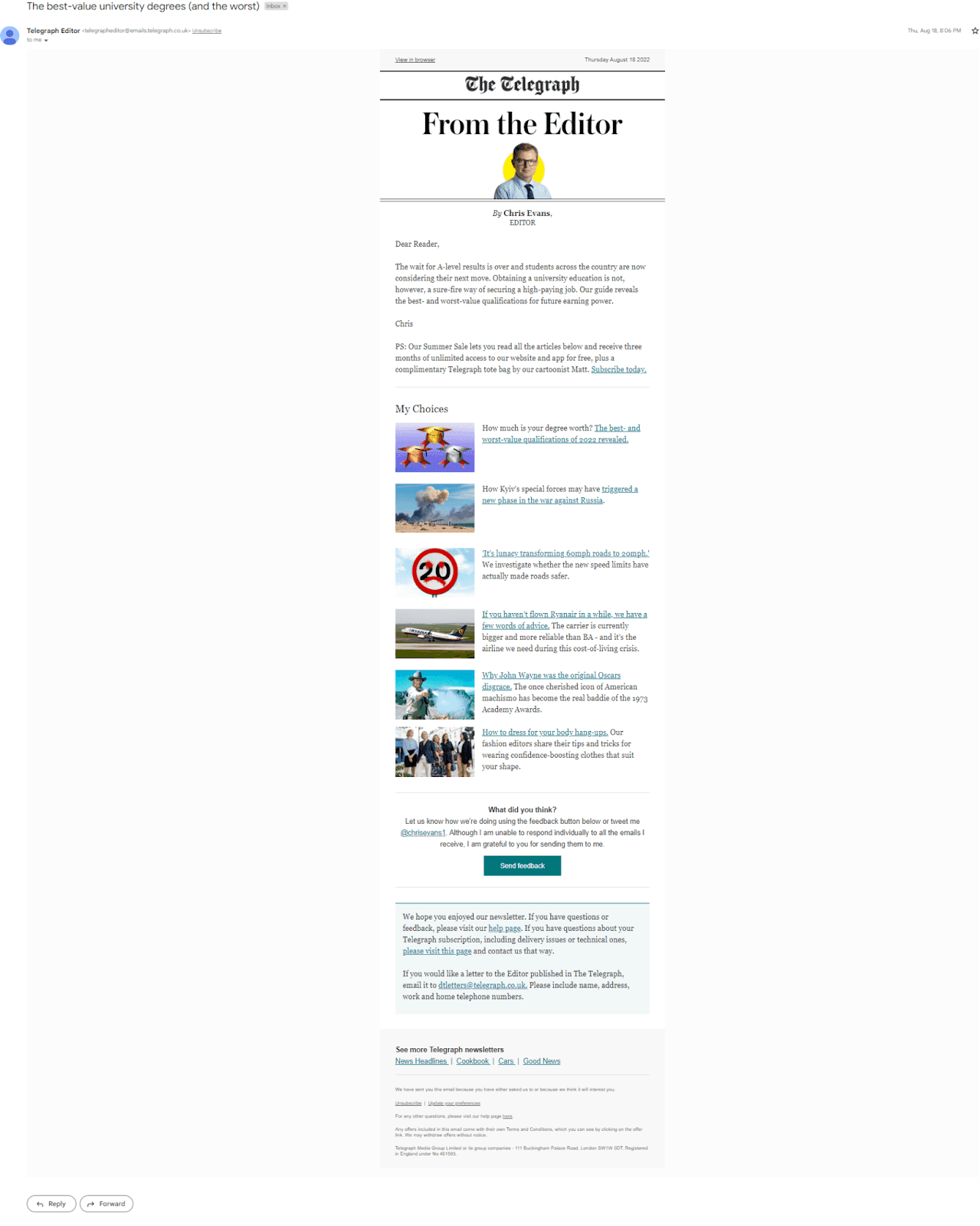 Type of Email:
Type of Email: Brand awareness (newsletter)
Success Rate:⭐
The subject line, as well as the first sentence of this email, hooks the reader by addressing a major pain point. And the formatting of the email is neat and linear. It directs user focus towards the bottom of the screen, where Telegraph has attached links to articles of user interest.
In addition, the email promises a ton of value while offering a discount, making it a promotional message as well.
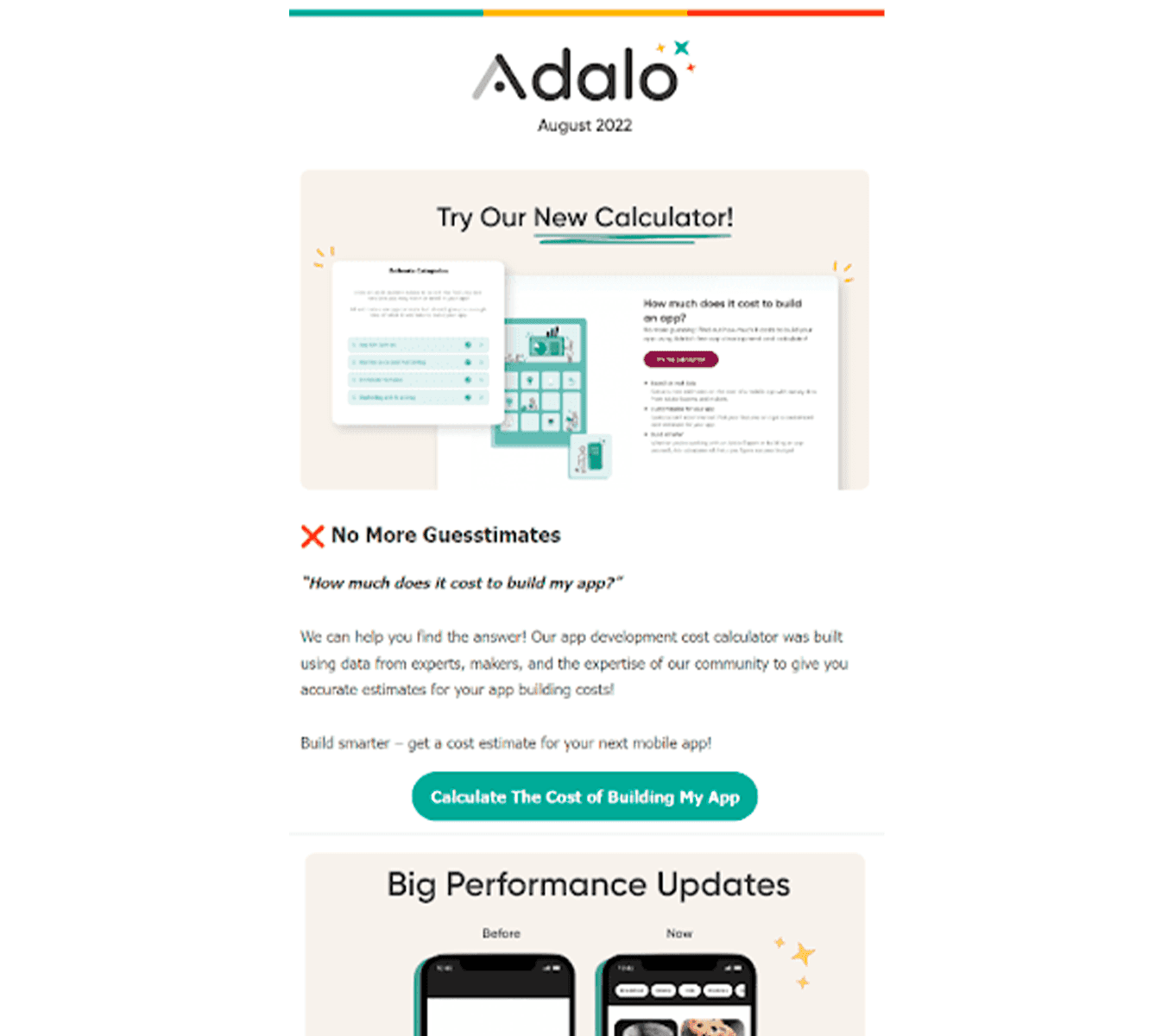 Type of Email:
Type of Email: Brand awareness
Success Rate:⭐⭐⭐
Adalo begins its product update email with the benefits of the new feature to the user. Naturally, this grabs the recipient's attention. Adalo also incorporated a clickable button without keeping their audience waiting to allow users to instantly test the new feature.
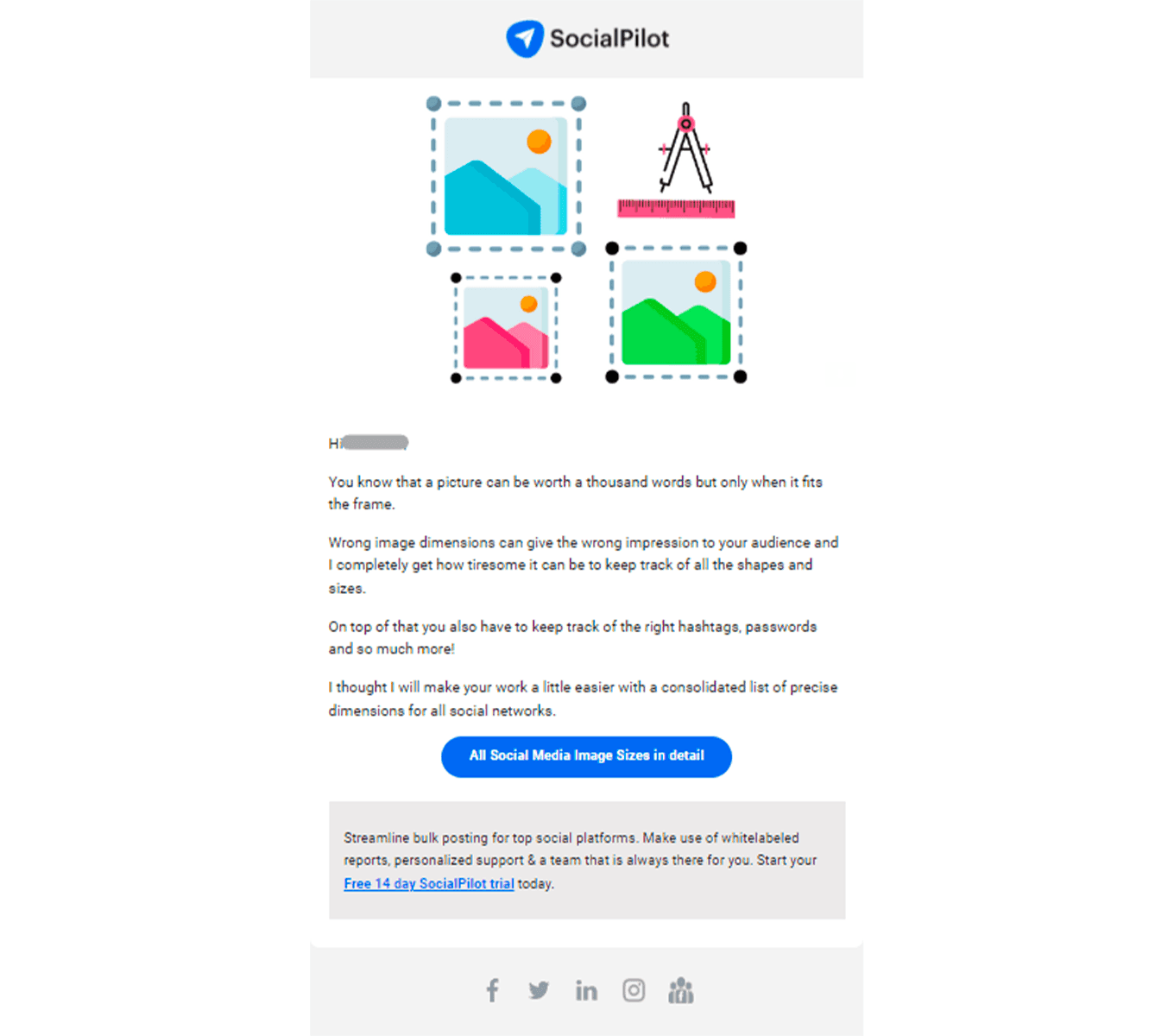 Type of Email:
Type of Email: Traffic generation
Success Rate: ⭐
This email did well because of its specificity and topic relevancy. Anyone who’s ever visited Social Pilot is definitely looking forward to improving their social media performance. This email provides such individuals with content that’s super useful for them.
Moreover, the user receives it from Rachel instead of the company, which makes the user feel more connected to the brand. At the bottom, Social Pilot has also reminded the user to try their 14-day free trial.
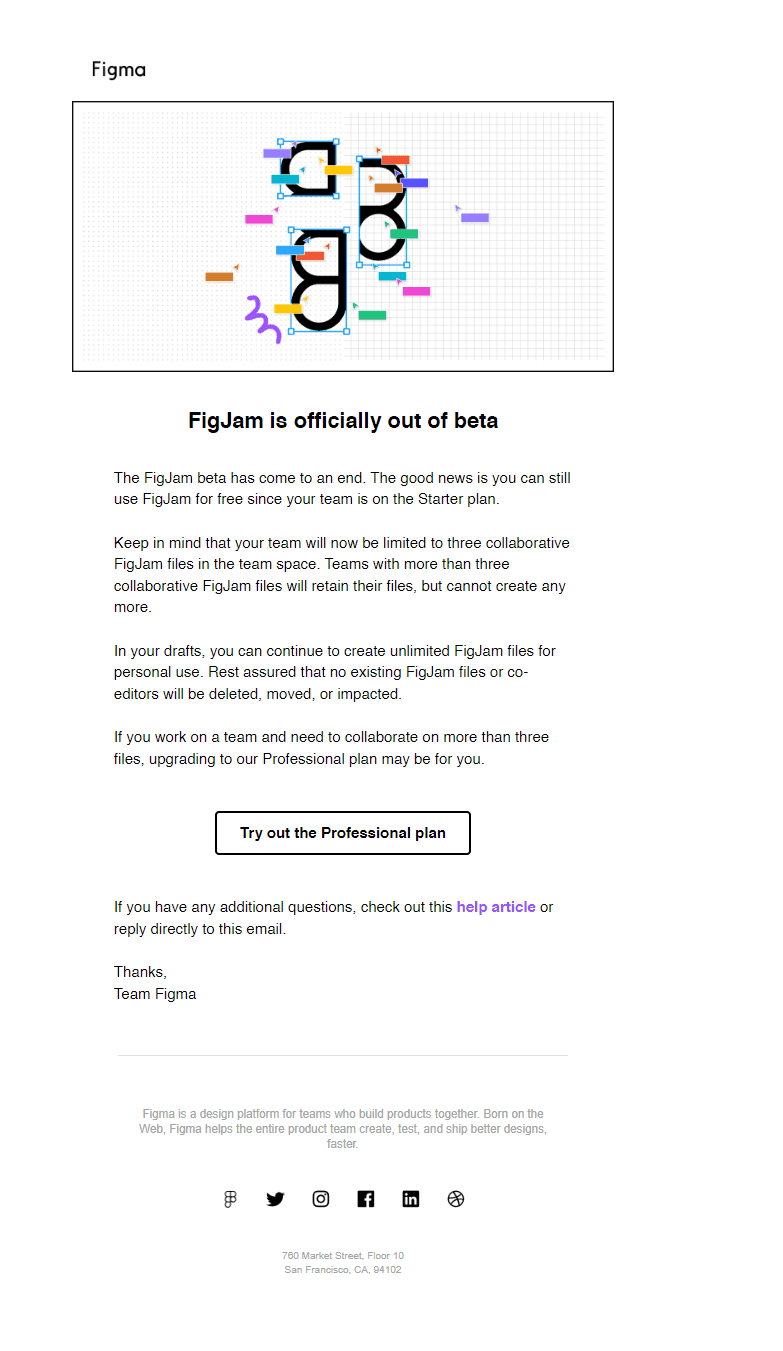 Type of Email:
Type of Email: Traffic generation
Success Rate: ⭐⭐⭐
On the surface, the email appears to be a brand awareness email. It updates the user about the recent feature update and explains its functionality to them. Serious Figma users are highly likely to read this text.
However, towards the end, the agenda of the email takes a different turn.
There’s a focus on the
helpful article
instead of the CTA button. Naturally, this makes the recipient curious and prompts them to check out what’s in the article.
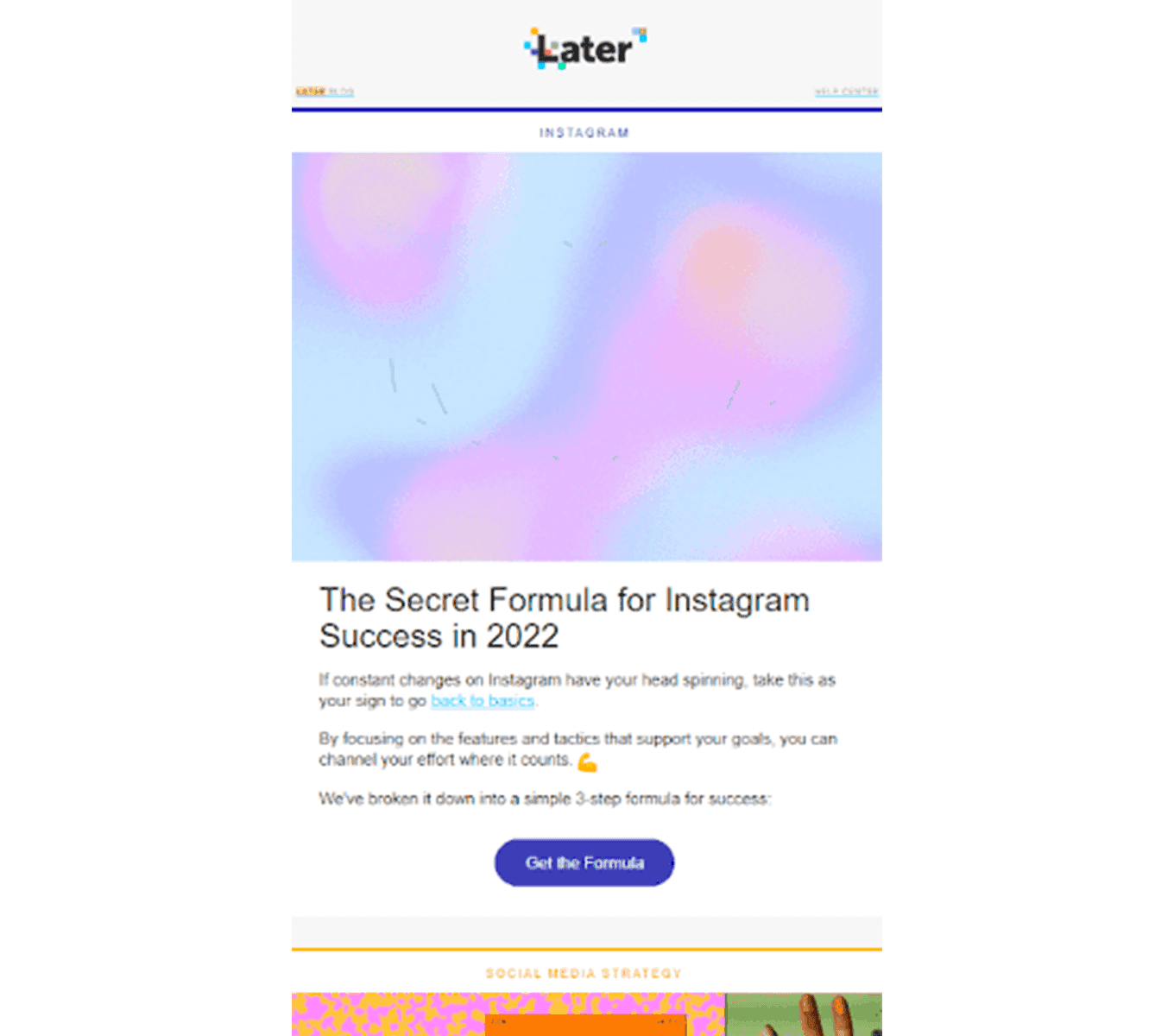 Type of Email:
Type of Email: Traffic generation
Success Rate: ⭐
Later.com can drive more subscribers to its website because its email newsletters are full of the latest industry trends and valuable information.
There’s a dedicated section for all important updates with arresting graphics. Plus, there’s an update about Later’s recently released feature at the end of the email.
Type of Email: Traffic generation
Success Rate: ⭐
The poll is what grabs the reader’s eye in this email. Although it doesn’t allow the user to cast their vote within the email, it compels the user to click on the option they’d like to support, which takes them to one of Chegg’s landing pages.
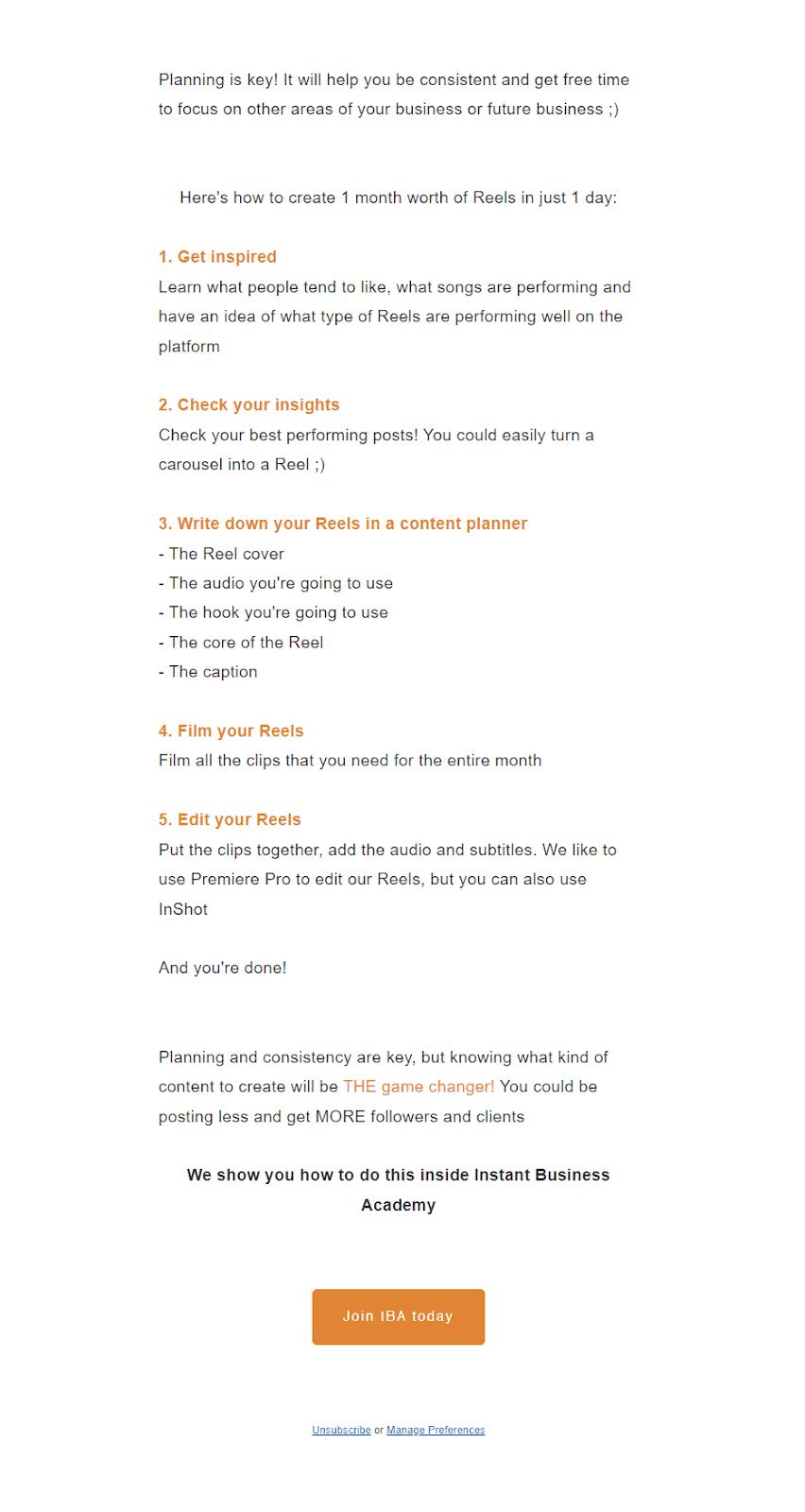 Type of Email:
Type of Email: Promotional (SDR)
Success Rate: ⭐
Elsynergy’s email worked because it’s very scannable and human. It uses emojis, text-language, and lands in your inbox with Laura’s name (their sales representative). This makes the reader feel connected to the company, and the valuable tips also encourage the reader to learn more at IBA.
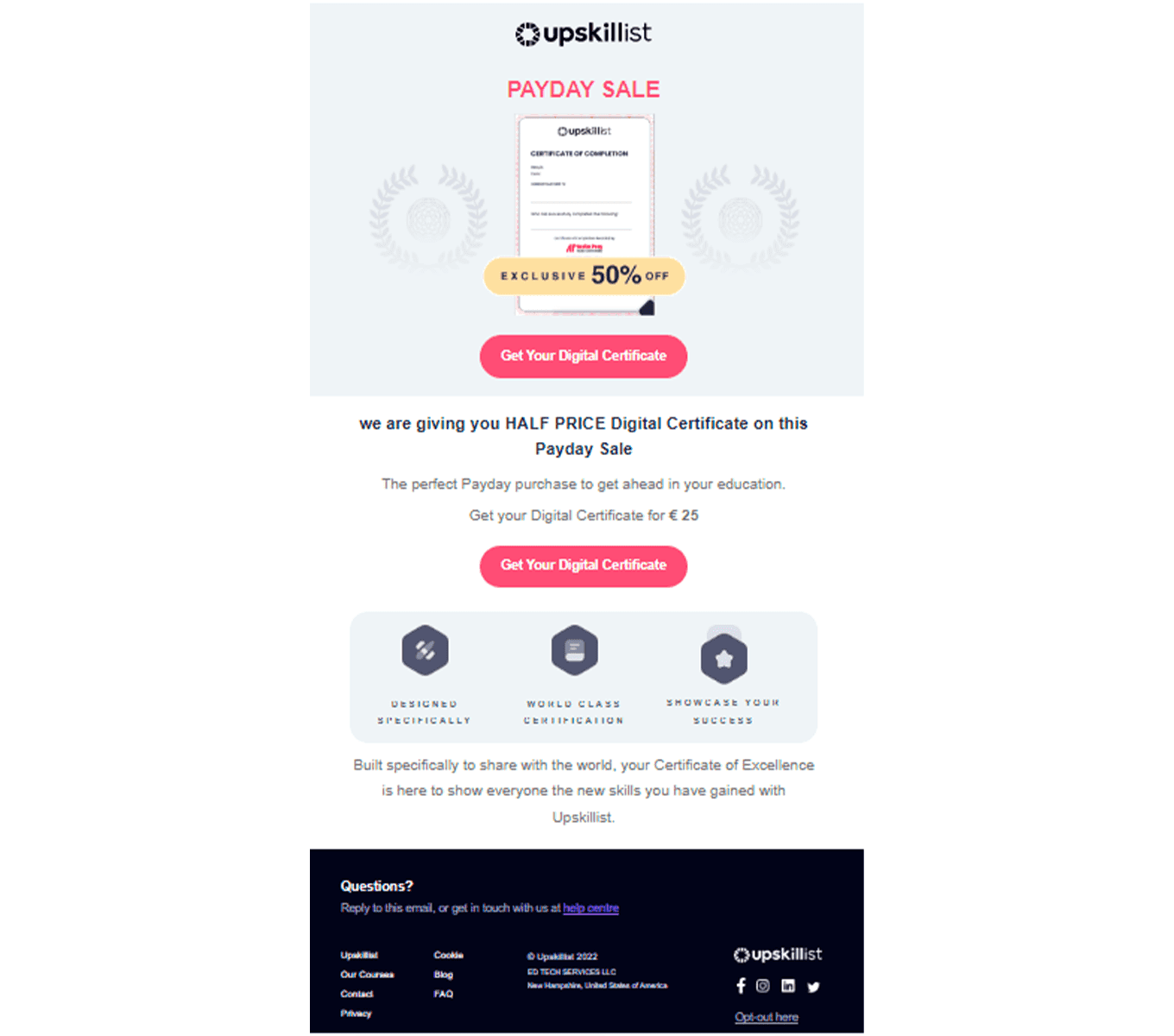 Type of Email:
Type of Email: Promotional
Success Rate: ⭐
Upskillist chose a very neat and compelling email design, which highlights their promises just as intended. The 50 percent discount is the major highlight of this email and is the first thing the recipient notices. They also promise a digital certificate to encourage the user to use the discount.
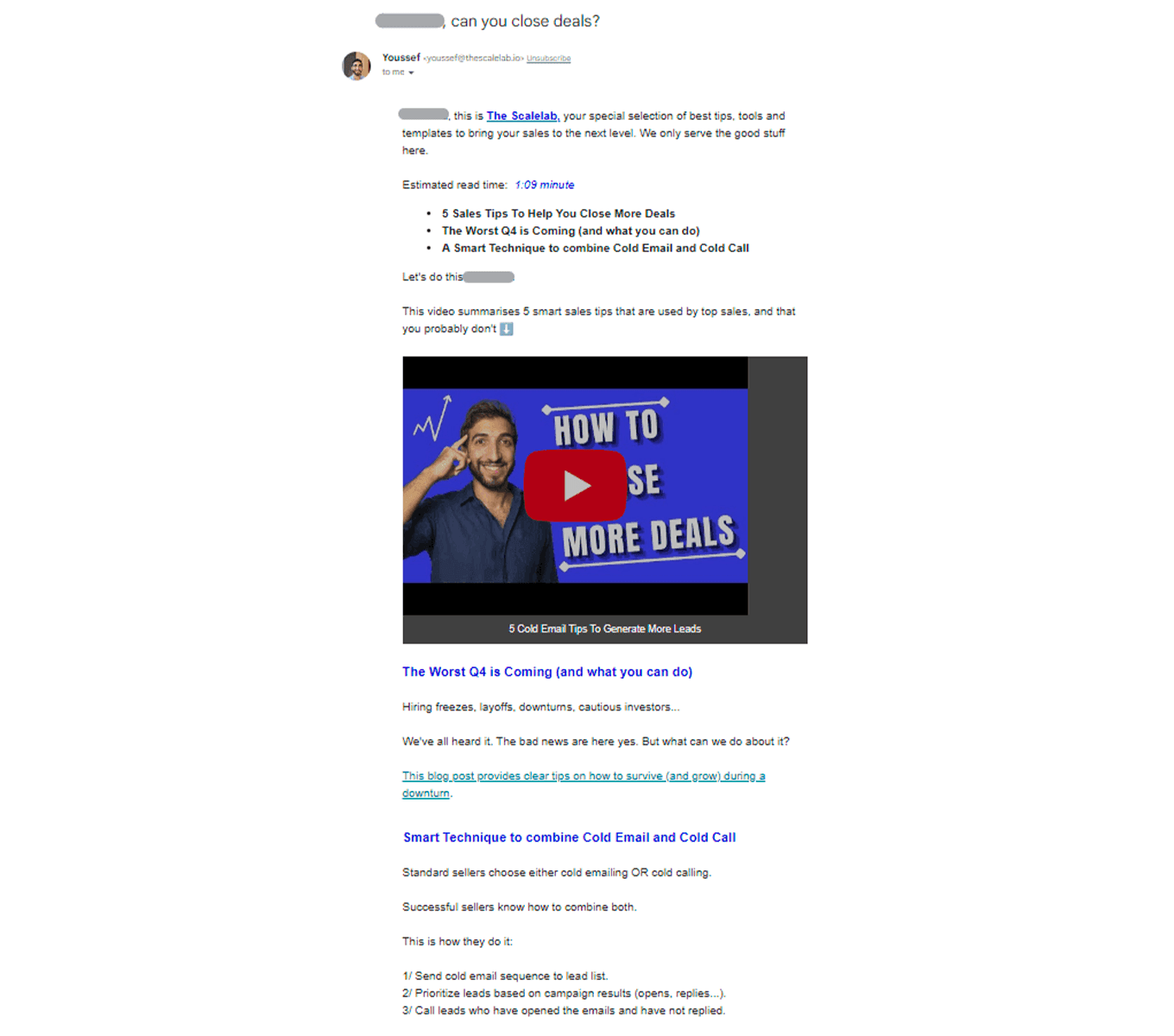 Type of Email:
Type of Email: Promotional (SDR)
Success Rate: ⭐
When this email arrived in my inbox, it had a lot of white space on the right. That’s because it was intentionally aligned to the left, which is the highlight of this email. It reaches your inbox with Youseff’s name (The Scale Lab’s SDR), and when you open it, you realize it’s formatted like your own emails. The
human factor here will compel you to read further.
Apart from that, this email delivers a highly personalized and user-friendly experience. It delivers video content right to the inbox and features clickable links.
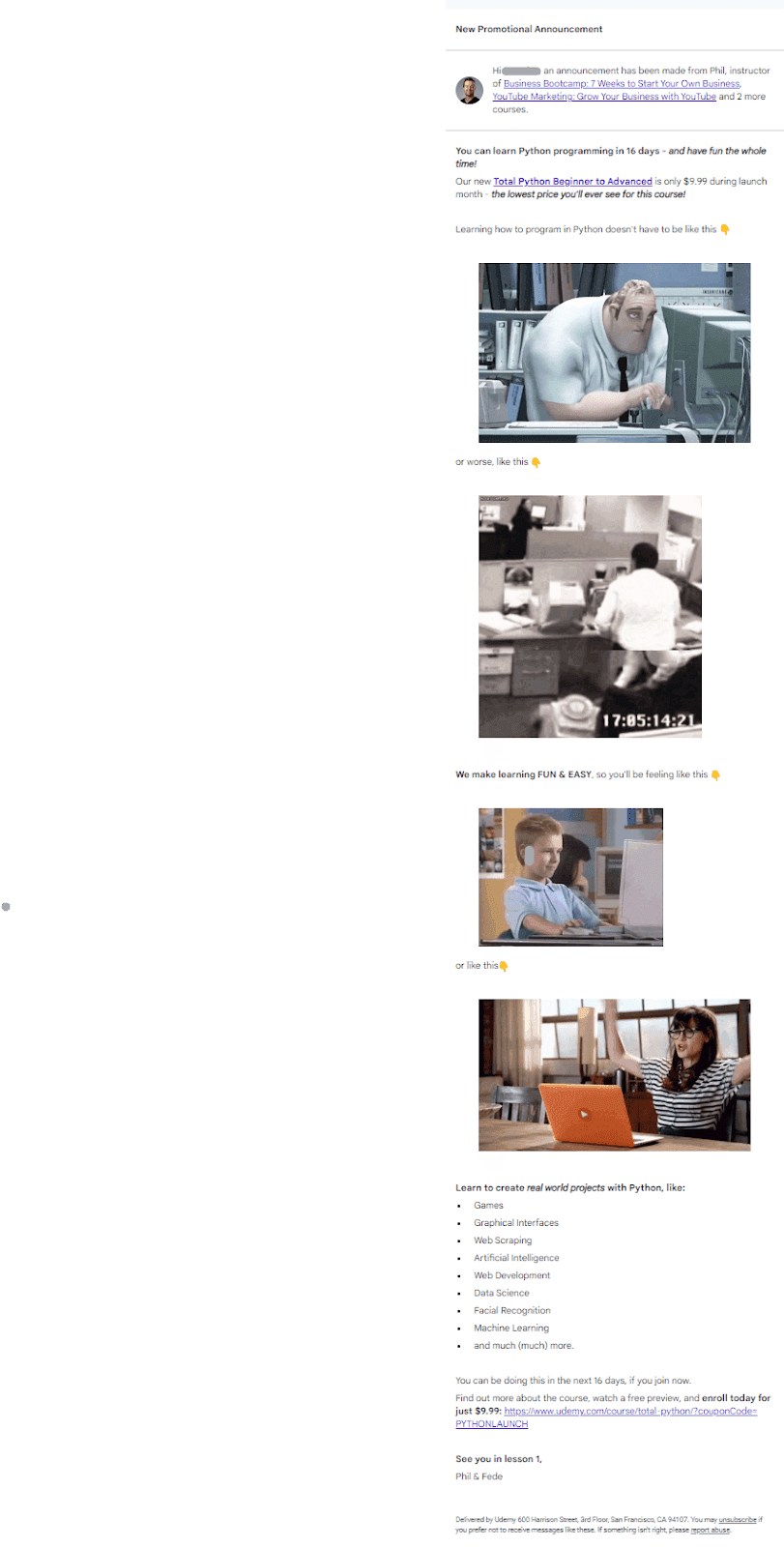 Type of Email:
Type of Email: Promotional
Success Rate: ⭐⭐⭐
Phil Ebiner never fails to impress with his natural take on communication. In this promotional email, Phil has casually offered discounts and included engaging GIFs so that the recipient reads it until the end. The email copy is highly skimmable, too.
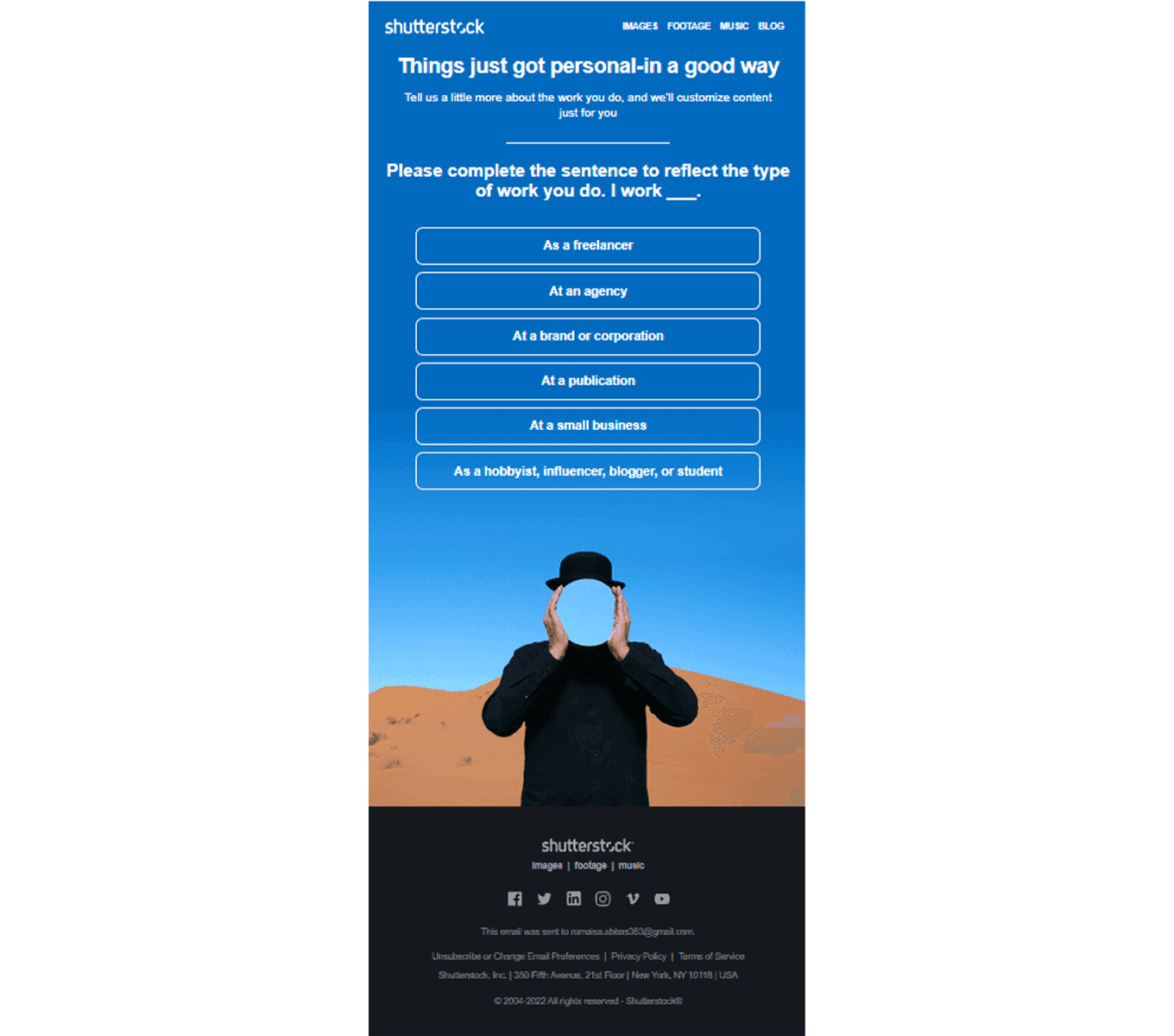 Type of Email:
Type of Email: Re-engagement
Success Rate: ⭐⭐⭐
Shutterstock notices when users haven’t visited their website in a long time and sends out re-engagement emails like these. The brilliant thing about this email is that it’s centered around you
. It makes the recipient feel important, noticed, and valued. Apart from the feel it delivers, the email also engages readers with a question, clickable buttons, and an arresting graphic.
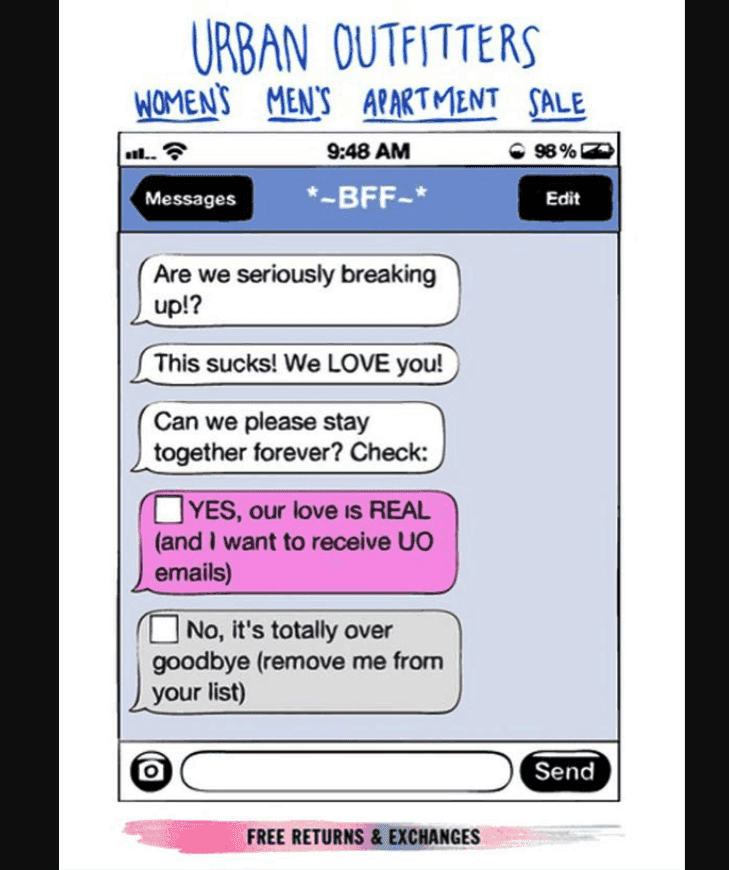 Type of Email:
Type of Email: Re-engagement
Success Rate: ⭐⭐⭐
The email shows how well Urban Outfitters understands its audience. There’s no way Gen Z can avoid an email in the text format. Plus, it’s all clickable. Bottom line: it’s fun, engaging, and actionable. Experts loved this one because it makes you take notice.
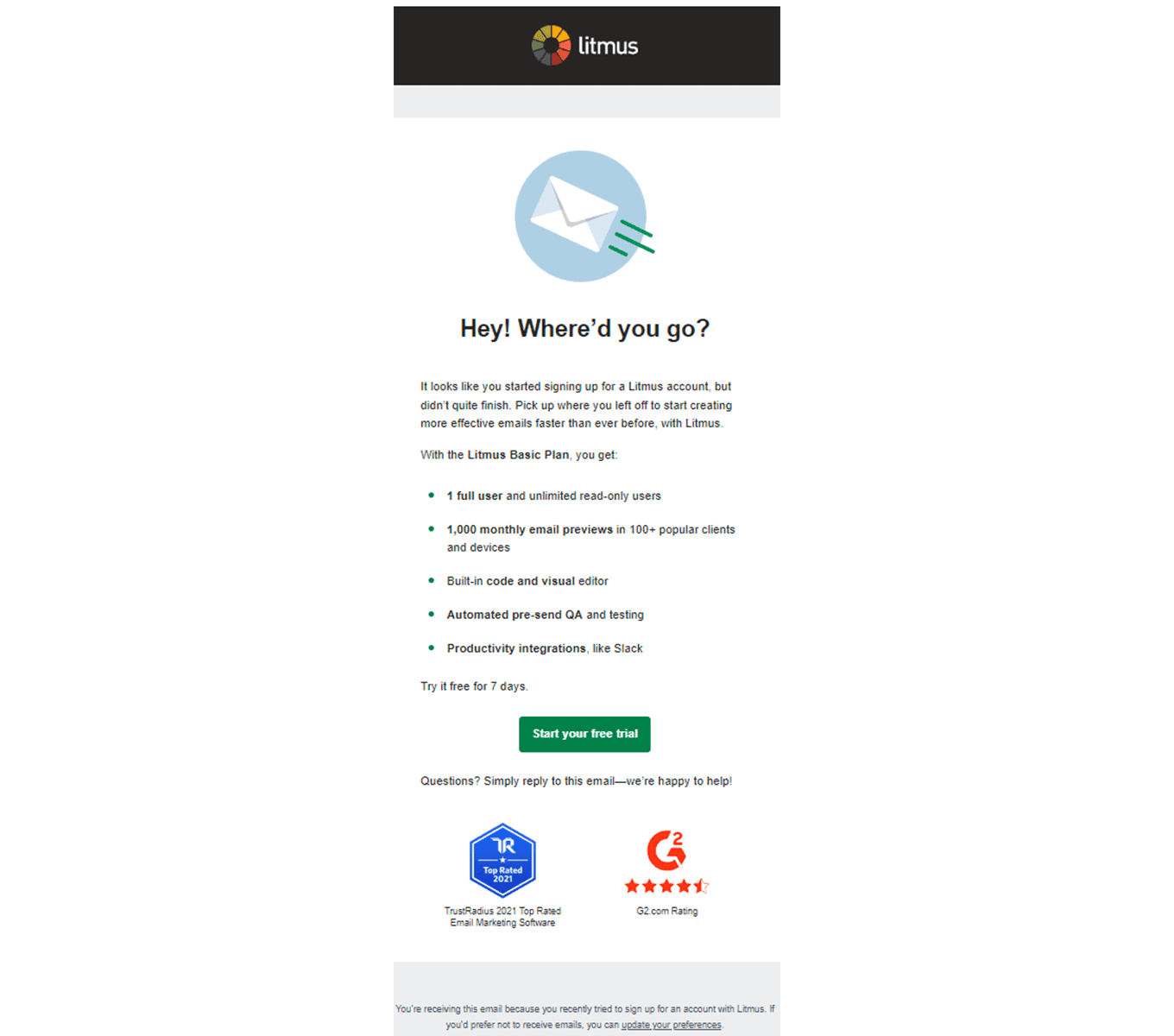 Type of Email:
Type of Email: Re-engagement
Success Rate: ⭐⭐⭐
Litmus’s re-engagement email is quick, neat, and highly comprehensive. After signing up on Litmus, you’ll receive this email within five minutes of inactivity. The company nudges you to come back while you’re contemplating whether you should go for it. This prompts reconsideration and
increases the chance of conversion.
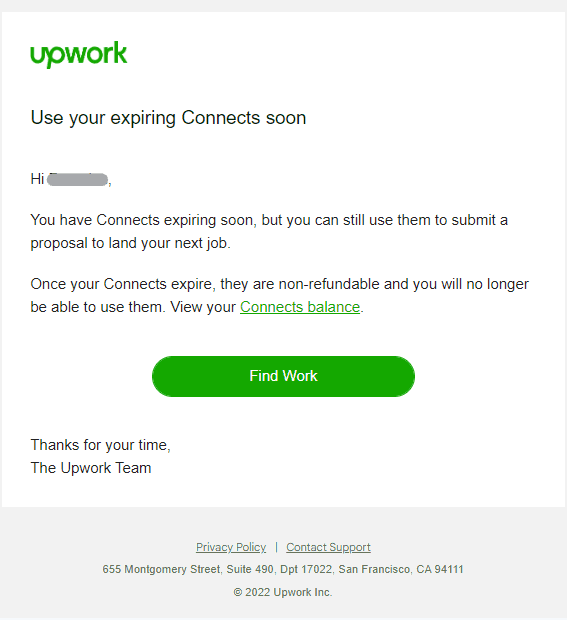 Type of Email:
Type of Email: Re-engagement
Success Rate: ⭐
Upwork creates a sense of urgency by highlighting a loss the user may face if they are not active on the platform again. Moreover, they’ve given two CTAs (“Find Work” and “View your Connects Balance”). If the user doesn’t have the time or interest to find work, they will surely want to check their Connects balance to know what they are risking.
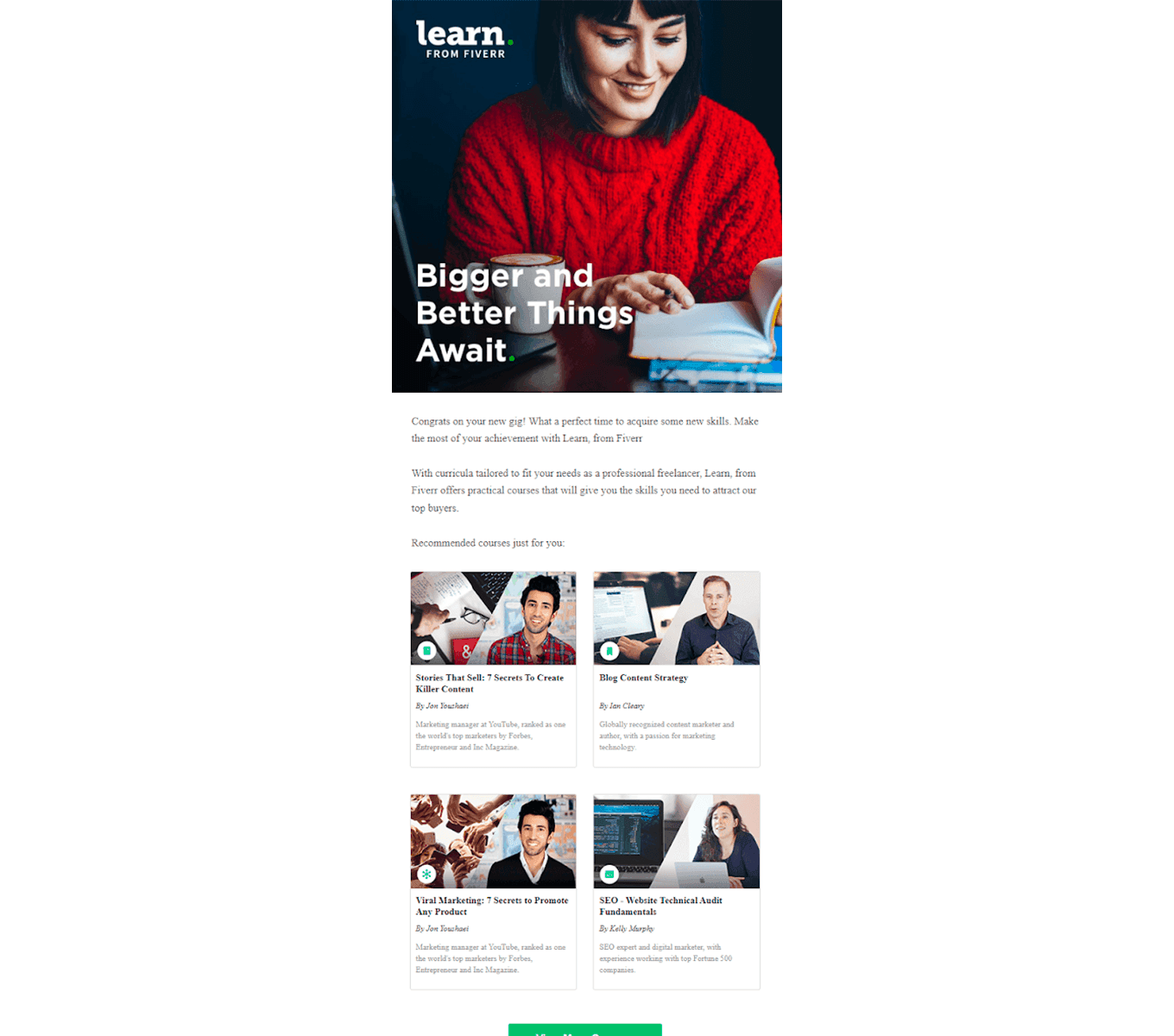 Type of Email:
Type of Email: Upselling
Success Rate: ⭐⭐⭐
This well-structured email serves its purpose perfectly because the courses recommended to the user are relevant to their industry. Fiverr also emphasizes that the courses come from experts, which compels the reader to
at least check them out. This is particularly true for those who are struggling with their gigs.

Type of Email: Upselling Email
Success Rate: ⭐⭐⭐
In this email, Grammarly first builds the reader’s interest by highlighting figures that matter to them — statistics related to their progress.
Next, Grammarly highlights the user’s need for their premium plan by sharing their top three mistakes. Following this, they offer a 50% discount to encourage the purchase. Although it’s a bit too long, it is well-spaced and features compelling graphics.
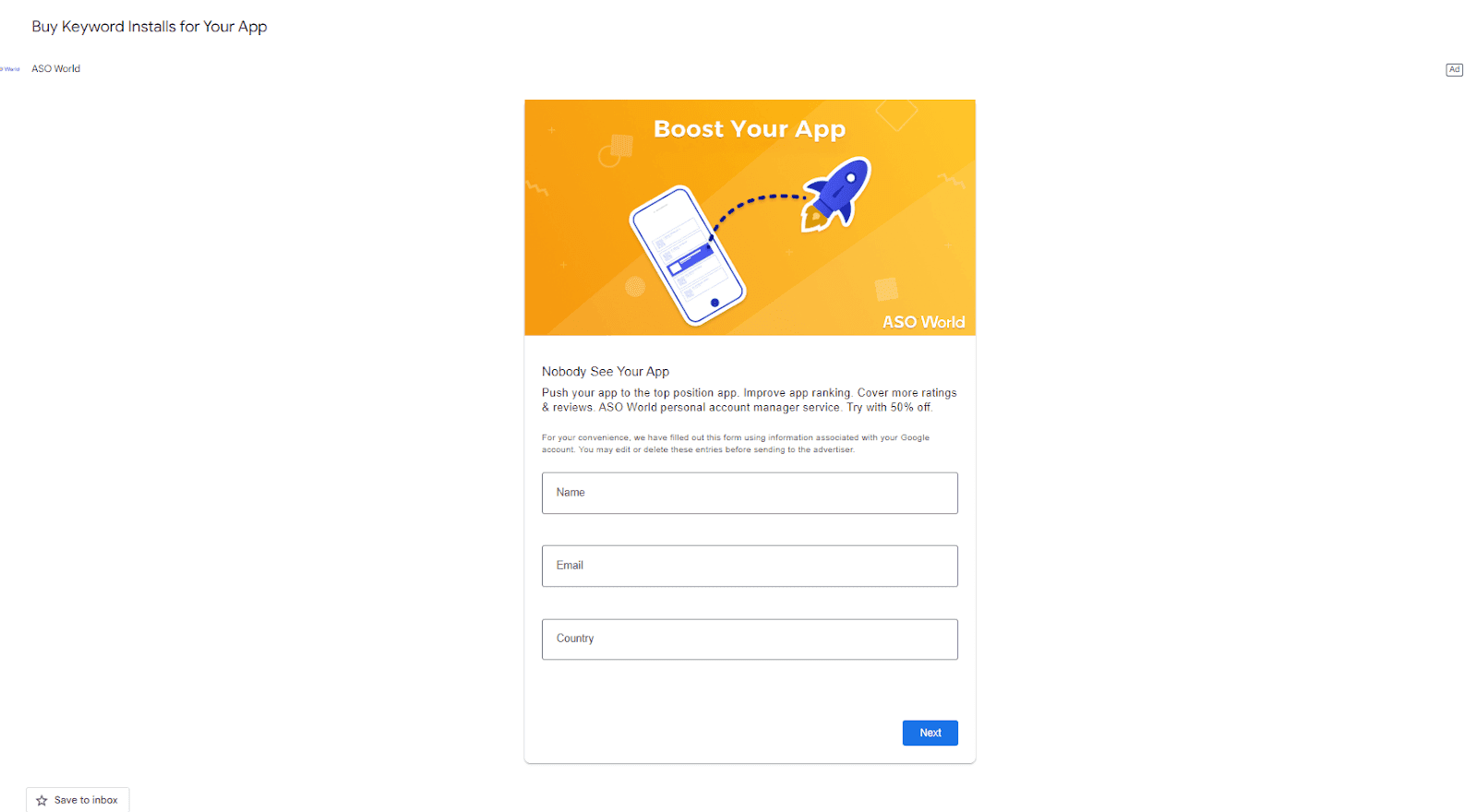 Type of Email:
Type of Email: Sponsorship email
Success Rate: ⭐
Sponsored emails have very slim success rates unless they have a very inviting and actionable subject line. ASO World nailed the subject line in this one — concise and direct. The email immediately promises a solution to the user and encourages action with an embedded form. The best part is that it’s an auto-fill form, so you only have to click
next
.
End Note
Before you go, there’s one more thing you need to know.
Notice that all of our email marketing examples want readers to take action. They are not about an action that you’ve already taken, making them different from transactional emails. Use these as inspiration to get your readers to engage with you and your brand. Happy writing!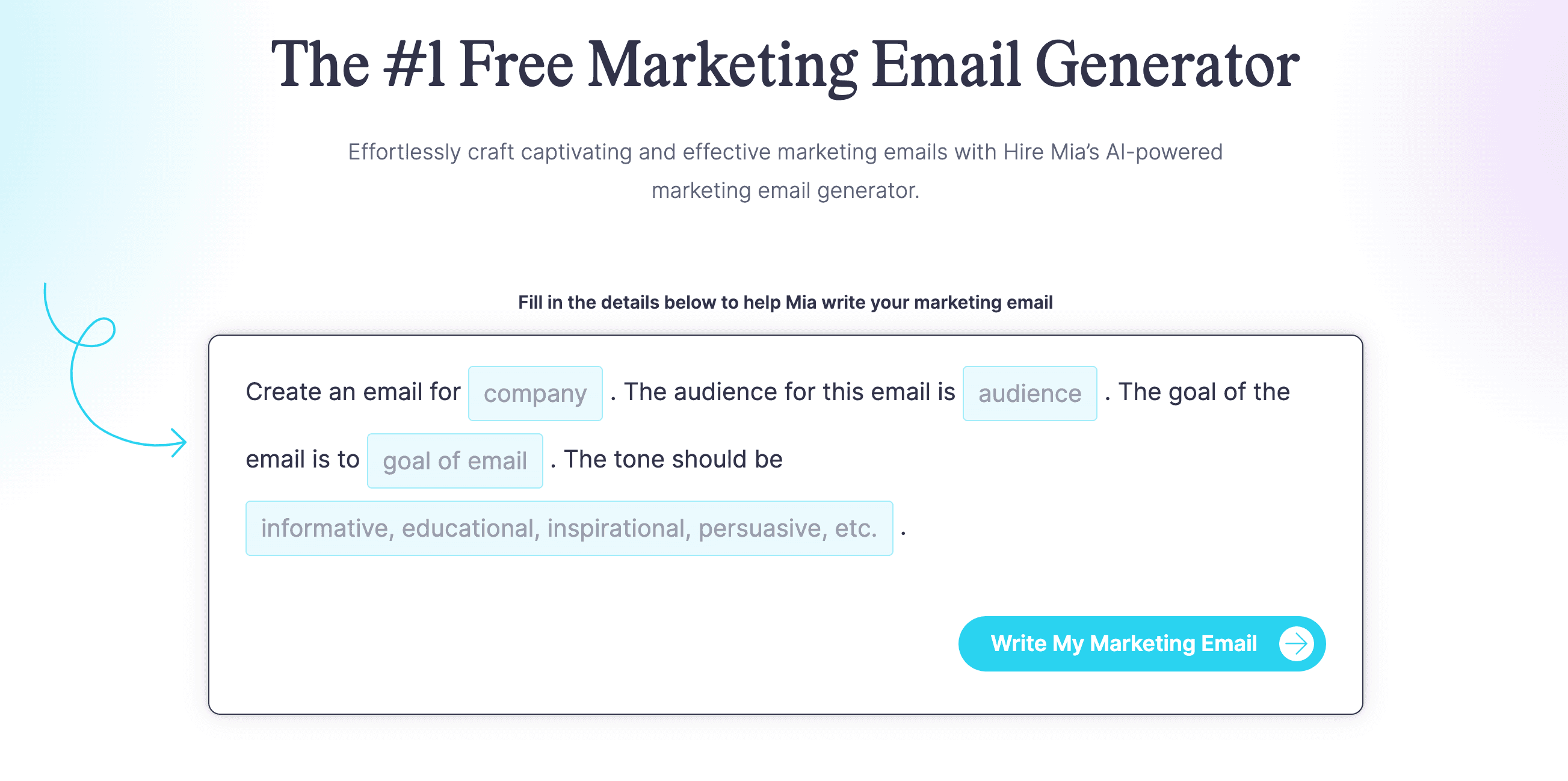 Source
Source

 Source
Source
 Type of Email: Onboarding
Success Rate: ⭐⭐⭐
This small yet appealing email introduces the key functionality of Hootsuite. It prompts the user to take immediate action with a specific CTA, i.e., schedule your first post. Using an avatar at the beginning of the email embeds a recognition factor in the user’s mind, which means this email also works as a brand awareness message.
Type of Email: Onboarding
Success Rate: ⭐⭐⭐
This small yet appealing email introduces the key functionality of Hootsuite. It prompts the user to take immediate action with a specific CTA, i.e., schedule your first post. Using an avatar at the beginning of the email embeds a recognition factor in the user’s mind, which means this email also works as a brand awareness message.
 Type of Email: Onboarding
Success Rate: ⭐
This email wins because it is very direct. The copy is precise and clear. And there’s a clickable button that eases the process for the user.
The email doesn’t waste the user's time and wins trust with solid instructions. As users set up their accounts, they also learn they’ll receive instructions about what to do, meaning they already trust Sendinblue’s customer support. They will value future emails.
Type of Email: Onboarding
Success Rate: ⭐
This email wins because it is very direct. The copy is precise and clear. And there’s a clickable button that eases the process for the user.
The email doesn’t waste the user's time and wins trust with solid instructions. As users set up their accounts, they also learn they’ll receive instructions about what to do, meaning they already trust Sendinblue’s customer support. They will value future emails.
 Type of Email: Onboarding (welcome email)
Success Rate: ⭐⭐⭐
After receiving this email, most Airbnb users did precisely what the email asked. And that’s because the step-by-step instructions in this email are very comprehensive. The credit goes to the actionable copy and corresponding graphics. Plus, there’s an option to set email preferences at the bottom, making the email highly customer-oriented.
Type of Email: Onboarding (welcome email)
Success Rate: ⭐⭐⭐
After receiving this email, most Airbnb users did precisely what the email asked. And that’s because the step-by-step instructions in this email are very comprehensive. The credit goes to the actionable copy and corresponding graphics. Plus, there’s an option to set email preferences at the bottom, making the email highly customer-oriented.
 Type of Email: Onboarding
Success Rate: ⭐
This is the first of Tawk.to’s eight-email-long onboarding campaign. It’s one of the best onboarding campaigns out there because the company demystifies the entire tool to the user step-by-step in a simple, comprehensive series of emails.
Type of Email: Onboarding
Success Rate: ⭐
This is the first of Tawk.to’s eight-email-long onboarding campaign. It’s one of the best onboarding campaigns out there because the company demystifies the entire tool to the user step-by-step in a simple, comprehensive series of emails.


 Type of Email: Brand awareness
Success Rate:⭐⭐⭐
This email begins and ends with an attractive discount. Throughout the message, Barnes & Noble has also personalized the experience by recommending books based on the recipient’s interest.
And as you can already tell, personalization and customer orientation are key to running successful email campaigns.
Type of Email: Brand awareness
Success Rate:⭐⭐⭐
This email begins and ends with an attractive discount. Throughout the message, Barnes & Noble has also personalized the experience by recommending books based on the recipient’s interest.
And as you can already tell, personalization and customer orientation are key to running successful email campaigns.
 Type of Email: Brand awareness
Success Rate: ⭐⭐⭐
The email begins with an attention-grabbing animation that provokes the user to hit the subscribe button. It also sparks curiosity about the gist of the email. Naturally, this brings the user to the text below, which is about YouTube's latest feature update. The messaging within the copy is clear, all-embracing, and ends with a clear CTA.
Type of Email: Brand awareness
Success Rate: ⭐⭐⭐
The email begins with an attention-grabbing animation that provokes the user to hit the subscribe button. It also sparks curiosity about the gist of the email. Naturally, this brings the user to the text below, which is about YouTube's latest feature update. The messaging within the copy is clear, all-embracing, and ends with a clear CTA.
 Type of Email: Brand awareness
Success Rate:⭐⭐⭐
This is the second of six emails Amazon Web Services sent subscribers about an upcoming event.
The content of the first three emails was the same, which continued to reinforce the importance of the event and served as an excellent reminder so people could save the date. The last three emails offered recordings and compensation to those who couldn’t attend the event.
Type of Email: Brand awareness
Success Rate:⭐⭐⭐
This is the second of six emails Amazon Web Services sent subscribers about an upcoming event.
The content of the first three emails was the same, which continued to reinforce the importance of the event and served as an excellent reminder so people could save the date. The last three emails offered recordings and compensation to those who couldn’t attend the event.
 Type of Email: Brand awareness (newsletter)
Success Rate:⭐
The subject line, as well as the first sentence of this email, hooks the reader by addressing a major pain point. And the formatting of the email is neat and linear. It directs user focus towards the bottom of the screen, where Telegraph has attached links to articles of user interest.
In addition, the email promises a ton of value while offering a discount, making it a promotional message as well.
Type of Email: Brand awareness (newsletter)
Success Rate:⭐
The subject line, as well as the first sentence of this email, hooks the reader by addressing a major pain point. And the formatting of the email is neat and linear. It directs user focus towards the bottom of the screen, where Telegraph has attached links to articles of user interest.
In addition, the email promises a ton of value while offering a discount, making it a promotional message as well.
 Type of Email: Brand awareness
Success Rate:⭐⭐⭐
Adalo begins its product update email with the benefits of the new feature to the user. Naturally, this grabs the recipient's attention. Adalo also incorporated a clickable button without keeping their audience waiting to allow users to instantly test the new feature.
Type of Email: Brand awareness
Success Rate:⭐⭐⭐
Adalo begins its product update email with the benefits of the new feature to the user. Naturally, this grabs the recipient's attention. Adalo also incorporated a clickable button without keeping their audience waiting to allow users to instantly test the new feature.
 Type of Email: Traffic generation
Success Rate: ⭐
This email did well because of its specificity and topic relevancy. Anyone who’s ever visited Social Pilot is definitely looking forward to improving their social media performance. This email provides such individuals with content that’s super useful for them.
Moreover, the user receives it from Rachel instead of the company, which makes the user feel more connected to the brand. At the bottom, Social Pilot has also reminded the user to try their 14-day free trial.
Type of Email: Traffic generation
Success Rate: ⭐
This email did well because of its specificity and topic relevancy. Anyone who’s ever visited Social Pilot is definitely looking forward to improving their social media performance. This email provides such individuals with content that’s super useful for them.
Moreover, the user receives it from Rachel instead of the company, which makes the user feel more connected to the brand. At the bottom, Social Pilot has also reminded the user to try their 14-day free trial.
 Type of Email: Traffic generation
Success Rate: ⭐⭐⭐
On the surface, the email appears to be a brand awareness email. It updates the user about the recent feature update and explains its functionality to them. Serious Figma users are highly likely to read this text.
However, towards the end, the agenda of the email takes a different turn.
There’s a focus on the helpful article instead of the CTA button. Naturally, this makes the recipient curious and prompts them to check out what’s in the article.
Type of Email: Traffic generation
Success Rate: ⭐⭐⭐
On the surface, the email appears to be a brand awareness email. It updates the user about the recent feature update and explains its functionality to them. Serious Figma users are highly likely to read this text.
However, towards the end, the agenda of the email takes a different turn.
There’s a focus on the helpful article instead of the CTA button. Naturally, this makes the recipient curious and prompts them to check out what’s in the article.
 Type of Email: Traffic generation
Success Rate: ⭐
Later.com can drive more subscribers to its website because its email newsletters are full of the latest industry trends and valuable information.
There’s a dedicated section for all important updates with arresting graphics. Plus, there’s an update about Later’s recently released feature at the end of the email.
Type of Email: Traffic generation
Success Rate: ⭐
Later.com can drive more subscribers to its website because its email newsletters are full of the latest industry trends and valuable information.
There’s a dedicated section for all important updates with arresting graphics. Plus, there’s an update about Later’s recently released feature at the end of the email.

 Type of Email: Promotional (SDR)
Success Rate: ⭐
Elsynergy’s email worked because it’s very scannable and human. It uses emojis, text-language, and lands in your inbox with Laura’s name (their sales representative). This makes the reader feel connected to the company, and the valuable tips also encourage the reader to learn more at IBA.
Type of Email: Promotional (SDR)
Success Rate: ⭐
Elsynergy’s email worked because it’s very scannable and human. It uses emojis, text-language, and lands in your inbox with Laura’s name (their sales representative). This makes the reader feel connected to the company, and the valuable tips also encourage the reader to learn more at IBA.
 Type of Email: Promotional
Success Rate: ⭐
Upskillist chose a very neat and compelling email design, which highlights their promises just as intended. The 50 percent discount is the major highlight of this email and is the first thing the recipient notices. They also promise a digital certificate to encourage the user to use the discount.
Type of Email: Promotional
Success Rate: ⭐
Upskillist chose a very neat and compelling email design, which highlights their promises just as intended. The 50 percent discount is the major highlight of this email and is the first thing the recipient notices. They also promise a digital certificate to encourage the user to use the discount.
 Type of Email: Promotional (SDR)
Success Rate: ⭐
When this email arrived in my inbox, it had a lot of white space on the right. That’s because it was intentionally aligned to the left, which is the highlight of this email. It reaches your inbox with Youseff’s name (The Scale Lab’s SDR), and when you open it, you realize it’s formatted like your own emails. The human factor here will compel you to read further.
Apart from that, this email delivers a highly personalized and user-friendly experience. It delivers video content right to the inbox and features clickable links.
Type of Email: Promotional (SDR)
Success Rate: ⭐
When this email arrived in my inbox, it had a lot of white space on the right. That’s because it was intentionally aligned to the left, which is the highlight of this email. It reaches your inbox with Youseff’s name (The Scale Lab’s SDR), and when you open it, you realize it’s formatted like your own emails. The human factor here will compel you to read further.
Apart from that, this email delivers a highly personalized and user-friendly experience. It delivers video content right to the inbox and features clickable links.
 Type of Email: Promotional
Success Rate: ⭐⭐⭐
Phil Ebiner never fails to impress with his natural take on communication. In this promotional email, Phil has casually offered discounts and included engaging GIFs so that the recipient reads it until the end. The email copy is highly skimmable, too.
Type of Email: Promotional
Success Rate: ⭐⭐⭐
Phil Ebiner never fails to impress with his natural take on communication. In this promotional email, Phil has casually offered discounts and included engaging GIFs so that the recipient reads it until the end. The email copy is highly skimmable, too.
 Type of Email: Re-engagement
Success Rate: ⭐⭐⭐
Shutterstock notices when users haven’t visited their website in a long time and sends out re-engagement emails like these. The brilliant thing about this email is that it’s centered around you. It makes the recipient feel important, noticed, and valued. Apart from the feel it delivers, the email also engages readers with a question, clickable buttons, and an arresting graphic.
Type of Email: Re-engagement
Success Rate: ⭐⭐⭐
Shutterstock notices when users haven’t visited their website in a long time and sends out re-engagement emails like these. The brilliant thing about this email is that it’s centered around you. It makes the recipient feel important, noticed, and valued. Apart from the feel it delivers, the email also engages readers with a question, clickable buttons, and an arresting graphic.
 Type of Email: Re-engagement
Success Rate: ⭐⭐⭐
The email shows how well Urban Outfitters understands its audience. There’s no way Gen Z can avoid an email in the text format. Plus, it’s all clickable. Bottom line: it’s fun, engaging, and actionable. Experts loved this one because it makes you take notice.
Type of Email: Re-engagement
Success Rate: ⭐⭐⭐
The email shows how well Urban Outfitters understands its audience. There’s no way Gen Z can avoid an email in the text format. Plus, it’s all clickable. Bottom line: it’s fun, engaging, and actionable. Experts loved this one because it makes you take notice.
 Type of Email: Re-engagement
Success Rate: ⭐⭐⭐
Litmus’s re-engagement email is quick, neat, and highly comprehensive. After signing up on Litmus, you’ll receive this email within five minutes of inactivity. The company nudges you to come back while you’re contemplating whether you should go for it. This prompts reconsideration and increases the chance of conversion.
Type of Email: Re-engagement
Success Rate: ⭐⭐⭐
Litmus’s re-engagement email is quick, neat, and highly comprehensive. After signing up on Litmus, you’ll receive this email within five minutes of inactivity. The company nudges you to come back while you’re contemplating whether you should go for it. This prompts reconsideration and increases the chance of conversion.
 Type of Email: Re-engagement
Success Rate: ⭐
Upwork creates a sense of urgency by highlighting a loss the user may face if they are not active on the platform again. Moreover, they’ve given two CTAs (“Find Work” and “View your Connects Balance”). If the user doesn’t have the time or interest to find work, they will surely want to check their Connects balance to know what they are risking.
Type of Email: Re-engagement
Success Rate: ⭐
Upwork creates a sense of urgency by highlighting a loss the user may face if they are not active on the platform again. Moreover, they’ve given two CTAs (“Find Work” and “View your Connects Balance”). If the user doesn’t have the time or interest to find work, they will surely want to check their Connects balance to know what they are risking.
 Type of Email: Upselling
Success Rate: ⭐⭐⭐
This well-structured email serves its purpose perfectly because the courses recommended to the user are relevant to their industry. Fiverr also emphasizes that the courses come from experts, which compels the reader to at least check them out. This is particularly true for those who are struggling with their gigs.
Type of Email: Upselling
Success Rate: ⭐⭐⭐
This well-structured email serves its purpose perfectly because the courses recommended to the user are relevant to their industry. Fiverr also emphasizes that the courses come from experts, which compels the reader to at least check them out. This is particularly true for those who are struggling with their gigs.
 Type of Email: Sponsorship email
Success Rate: ⭐
Sponsored emails have very slim success rates unless they have a very inviting and actionable subject line. ASO World nailed the subject line in this one — concise and direct. The email immediately promises a solution to the user and encourages action with an embedded form. The best part is that it’s an auto-fill form, so you only have to click next.
Type of Email: Sponsorship email
Success Rate: ⭐
Sponsored emails have very slim success rates unless they have a very inviting and actionable subject line. ASO World nailed the subject line in this one — concise and direct. The email immediately promises a solution to the user and encourages action with an embedded form. The best part is that it’s an auto-fill form, so you only have to click next.





